West Cemetery was ridiculously beautiful (to me). It’s hailed as one of the most romantic and atmospheric cemeteries in Europe. Opened in 1839, it is the third of the private cemeteries in London but incredibly different to what it would’ve originally looked like back then. It’s set upon Highgate Hill, and was said to be on level with the dome of St Pauls Cathedral as well as having beautiful views of the metropolis. Originally it was more like a manicured garden, with pristine lawns and bushes for friends and relatives to visit their loved ones final resting place, and enjoy the light and airy space. Today it is much different.
Today Highgate West Cemetery is a combination of architecture, sculptures, and nature all thrown together; in what might be labelled a tangled mess. If you’ve already read my post on the East Cemetery then you’ll know that it was very much taken over by nature, even having some pathways blocked off due to safety concerns. West Cemetery is exactly the same but on steroids!
The best way to structure this is probably to take you through it how we did; which was on a tour. We went around with our tour guide and about twelve other like-minded folk, all eager to know more about this magnificent place. The first thing she told us about was the history of cemeteries. You never really stop to think about how things so mundane as a cemetery came to be so it was a really shocker to find out that the concept of cemeteries came from the overcrowded and unsanitary Anglican churchyards of the 1820’s. Bodies would often be buried and then later exhumed, about six weeks later to be dismembered and tossed aside to make room for the next batch of burials. This would often attract wild dogs who would do further damage to the remains, and our tour guide said that even women wouldn’t dare go through the churchyard because the scenes there were often quite disturbing.
As the introduction of cemeteries came into play so too did the Victorians fear of bodysnatchers, which heralded the walled cemetery gardens. Highgate went a step further though. Not only did they have tall brick walls and cast-iron railings but the cemetery was also patrolled around the clock by retired soldiers and dogs to further ease the fears of future dwellers and their loved ones.
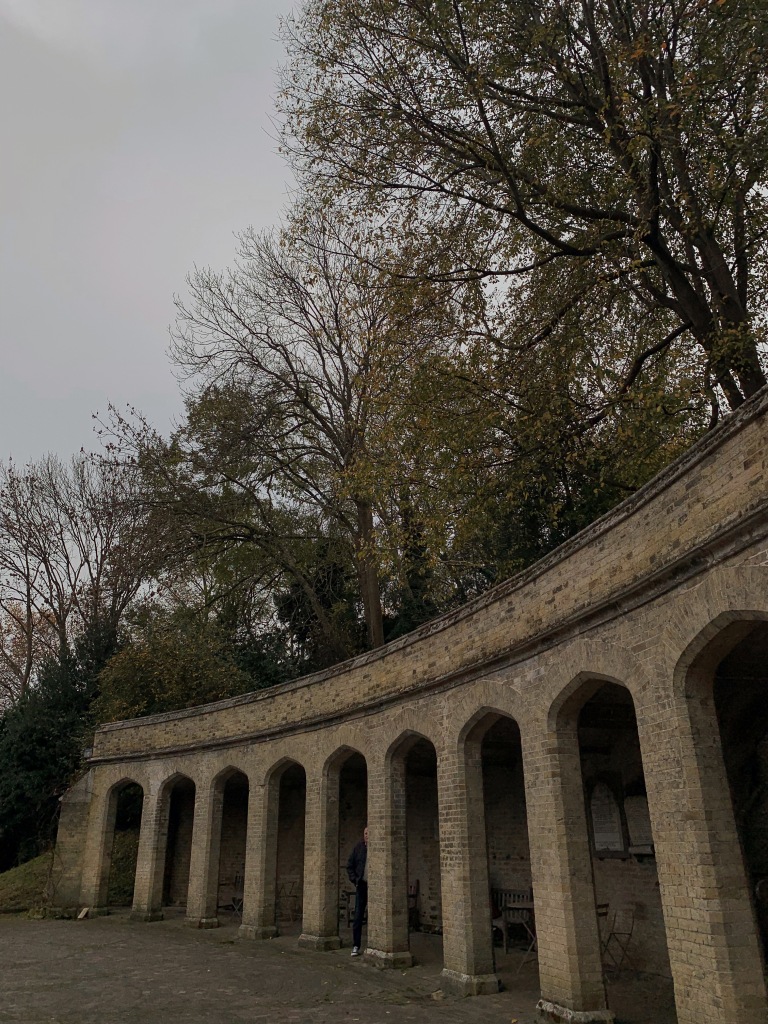
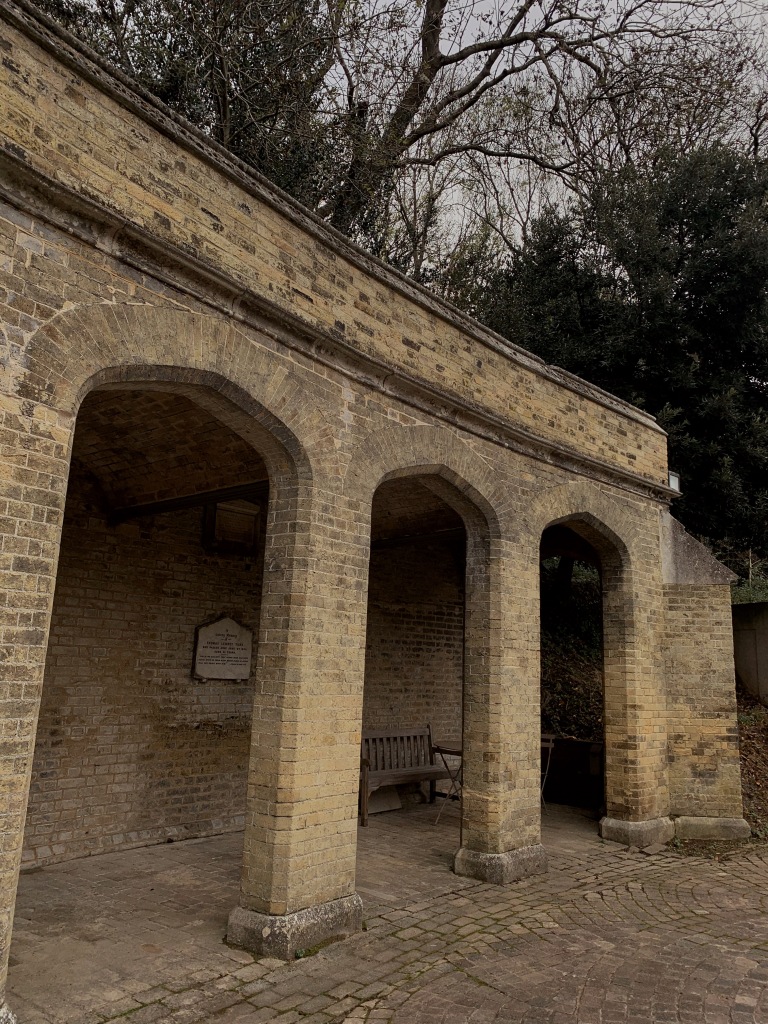
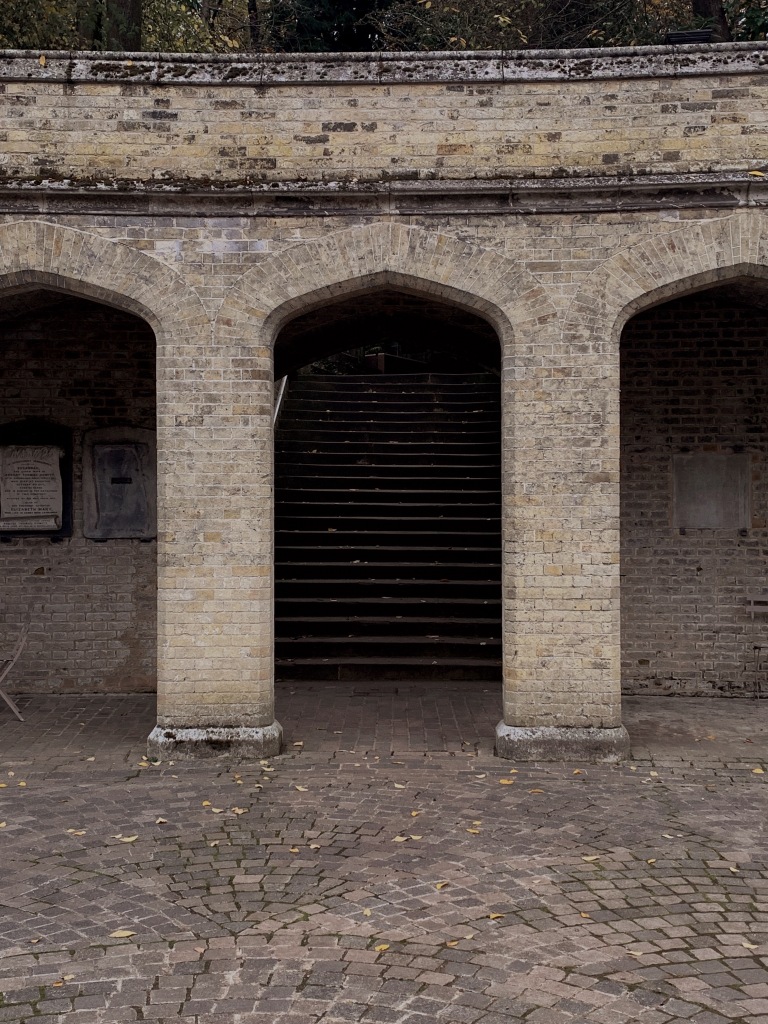
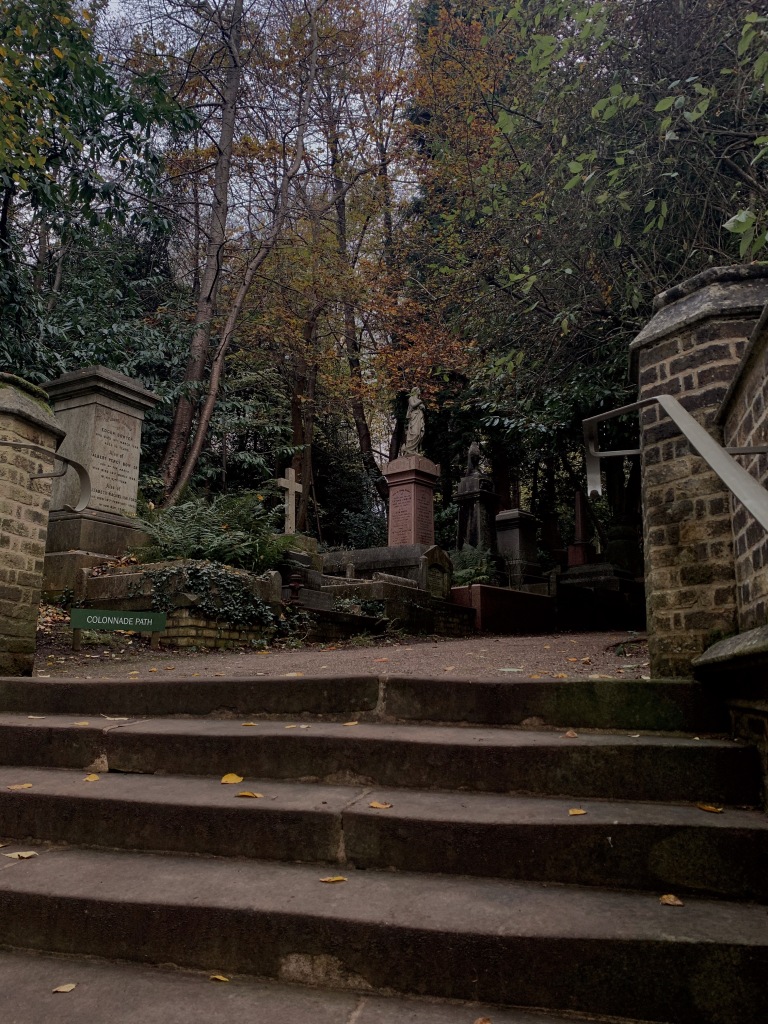
The tour begins at the entrance, the Gatehouse. The architect of the site Stephen Geary designed the gothic gatehouse to cater to everybody, with two chapels within the same building. It has one chapel at one end for Anglicans with the other, on the opposite end for Dissenters. As you come through the gatehouse, you walk on into the courtyard; a beautiful open space, large enough for a horse-drawn carriage to fully turn around. It’s also framed one side by a colonnade for visitors to sit and admire the gothic exterior of the gatehouse which, while it’s experienced some decay is pretty much the same today as it was originally.
There are many footpaths to begin your walk around the cemetery but our tour began by going up the stair well from the colonnade. Again designed by Gerry in a dramatic way so you are literally leaving the land of the living and ascending up to those who have passed – which has a bit of a poetically, beguiling feeling for me; and that’s before you even take the view into consideration. When we went the trees still had their leaves so there were areas that were fully canopied and almost jungle-like. It created that dark, gloomy aesthetic that really emphasised the beauty of the cemetery.
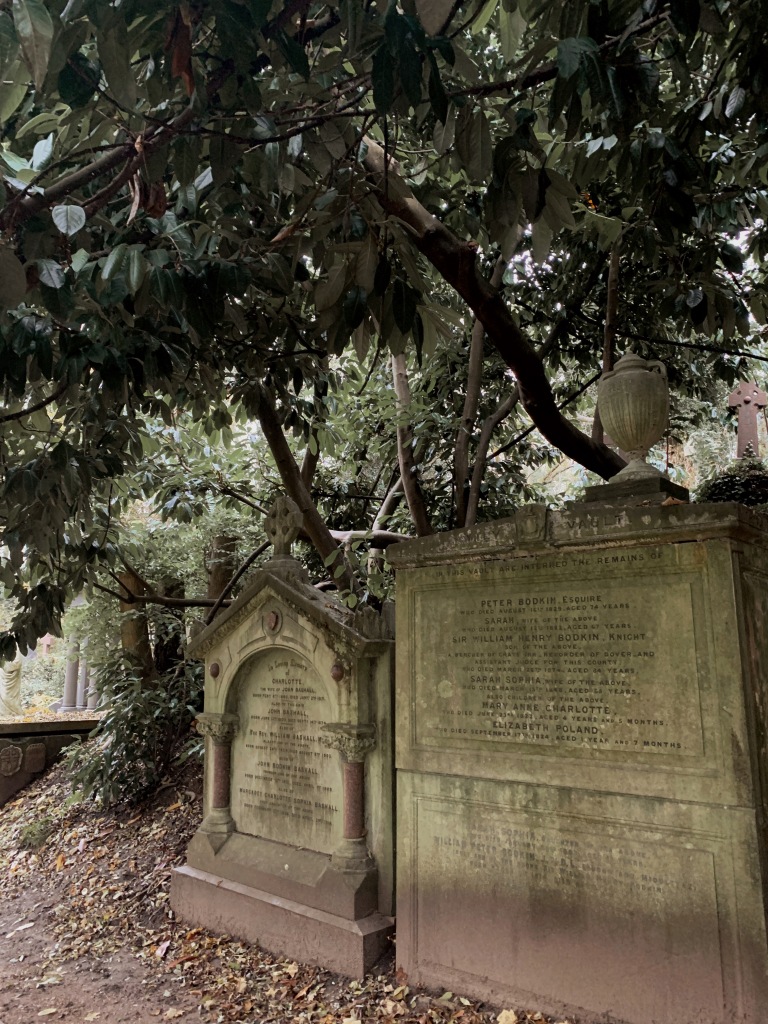
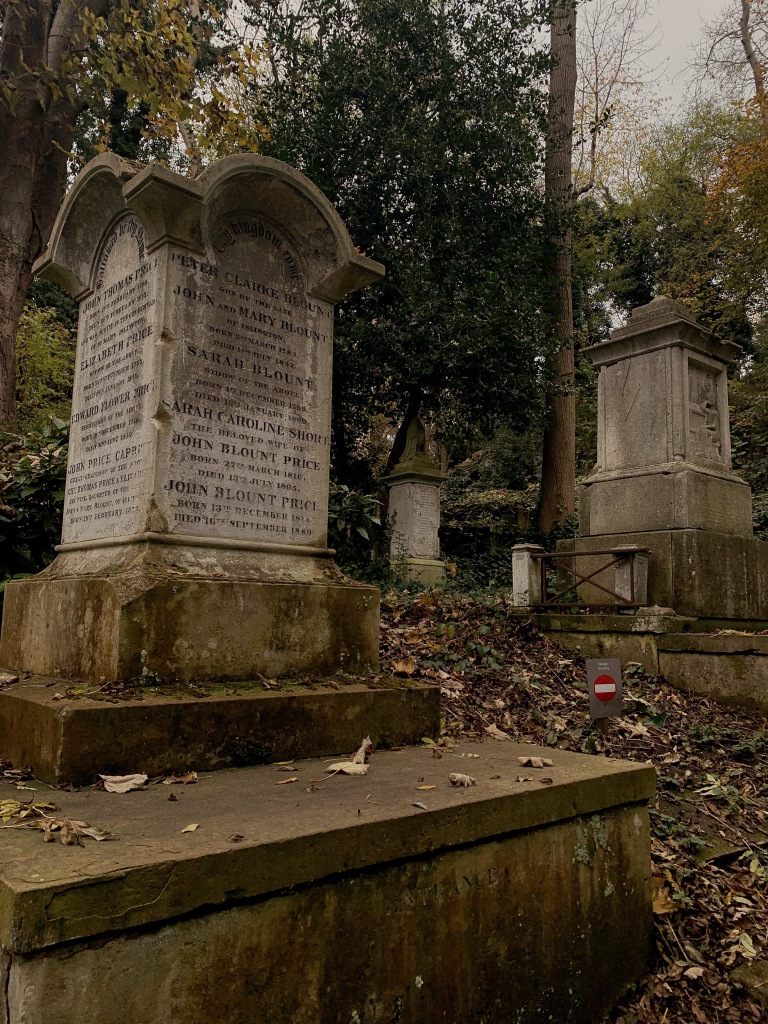
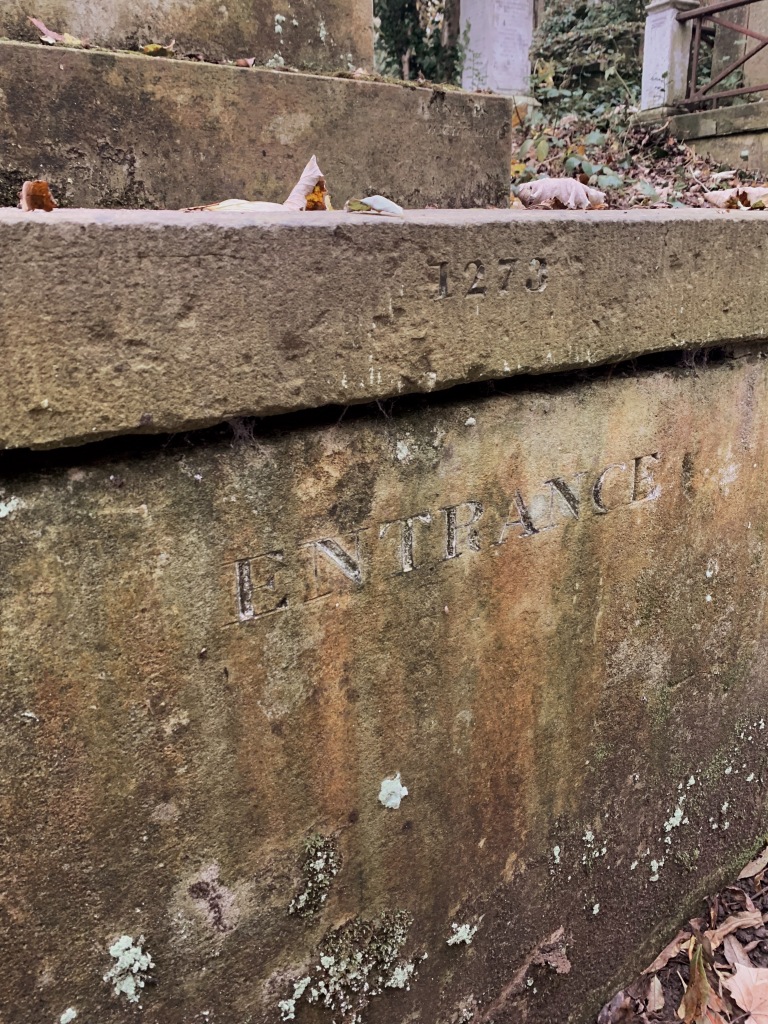
As our tour began, our guide talked us through things such as the different types of memorials such as vaults, sarcophagi, common graves, etc, but also the different symbols and sculptures that adorned these memorials, and what they meant. There are far too many to mention here but two of the most popular symbols were the sculpted Urns (with draped fabric to show grief and mourning) and the singular column (deliberately broken to show a life cut short). Another popular thing I noticed were the use of vaults so families could remain together in death. The vault of the Blount family really made me chuckle. I’m sure their use of carving the word ‘Entrance‘ on the front was for practicalities sake and for future masons to help their family members join the clan but I couldn’t help but be a bit tickled by this; and wonder if there was an exit sign marked on the inside too.
Another story I loved hearing about was the Rossetti family vault. Dante Gabriel Rossetti buried his muse, model and later wife Elizabeth Siddal with a notebook containing some of his unpublished poetry, only to decide he wanted it back several years later. He was then granted permission from the Home Secretary and a group of his friends went to disinter Siddal, and retrieve it for him one evening while he waited at home. I found this so fascinating but also quite eerie. At the time that we visited Highgate Cemetery, I was reading through a collection of Christmas Poetry and kept coming across poems by Christina Rossetti. She just so happens to be the sister of Dante and also buried along with Siddal in this vault; as well as other members of the Rossetti family.
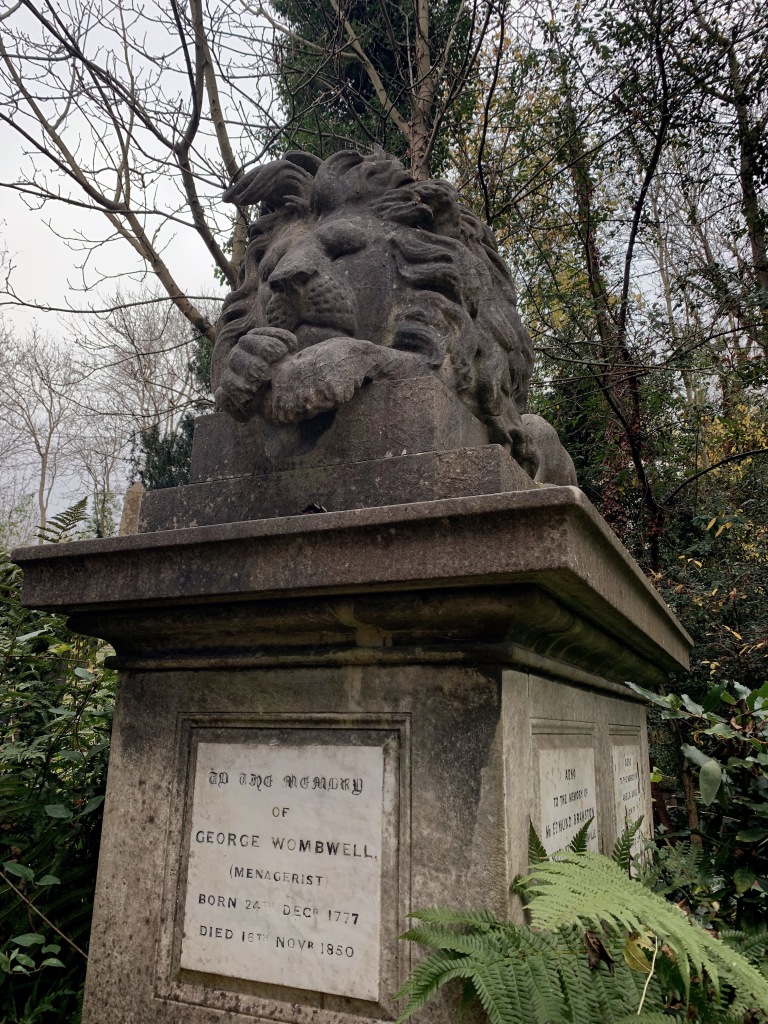
The thing I loved the most was just how much thought was given to these resting places. Yes, they’re incredibly lavish and imposing monuments but the details really made it so much more personal. For example, as we passed a mausoleum of a Victorian admiral our tour guide asked if we noticed anything odd about the railings on its perimeter. I’m not going to lie, I felt a little stupid having not noticed it when someone else pointed out that the vertical railings were actually made to look like canons: signalling his esteemed career.
Other personal touches were easier to notice by passers-by, purely because of their dominance in stature – along with their association to the dweller. George Wombwell, known for his travelling menagerie, has a chest tomb guarded by a sculpture of his sleeping lion Nero; who was said to be so docile that a toddler could ride him. (side note: our tour guide told us that Nero’s statue was still in it’s original state of pure white marble in the late 60s, but through air pollution and climate change its since been degraded to a grotty, textured stone sculpture. Still magnificent but a bit of an alarming fact).
Another cool chest tomb was that of Thomas Sayers, a hugely popular bare-knuckle fighter; think boxer with absolutely no rules. He was such a well-known sporting hero of the day, with even Queen Victoria and Prince Albert often asked to be kept updated as to how his matches were going. Regardless of all his adoring fans, even those in high places, he still said his most loyal companion was that of his beloved bull-mastiff Lion; who also has a place on his memorial, with a life-sized sculpture protecting him even in death. I never knew this name, like so many others we heard whilst there but I really need to learn more about these people – they’re so so fascinating.
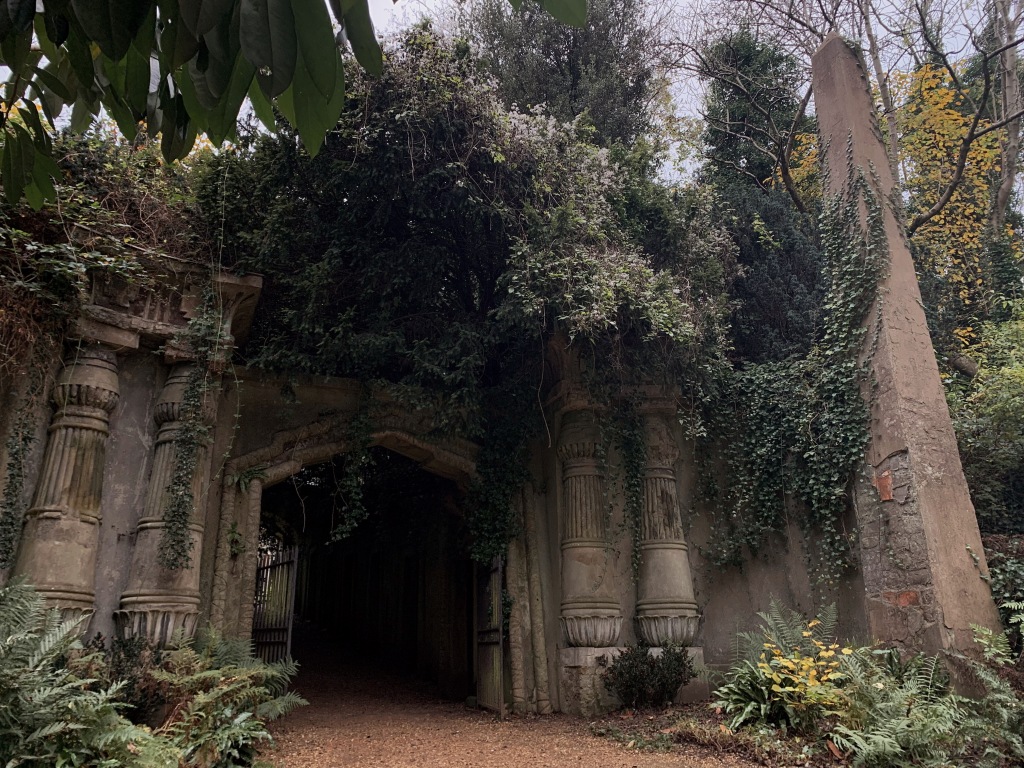
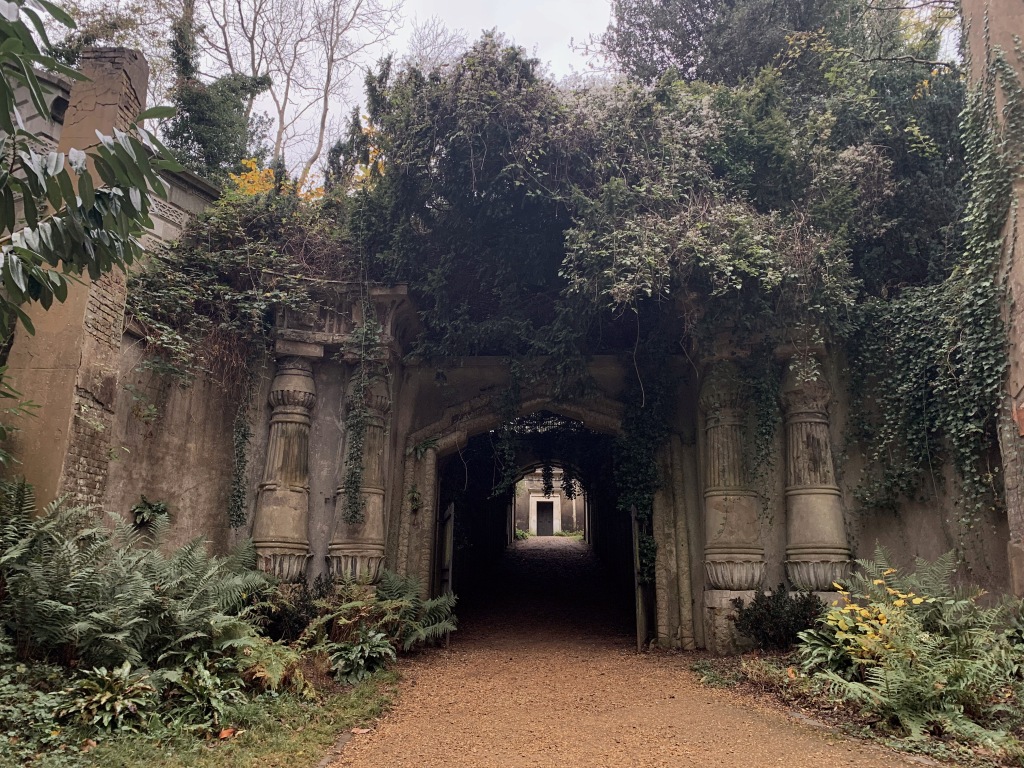
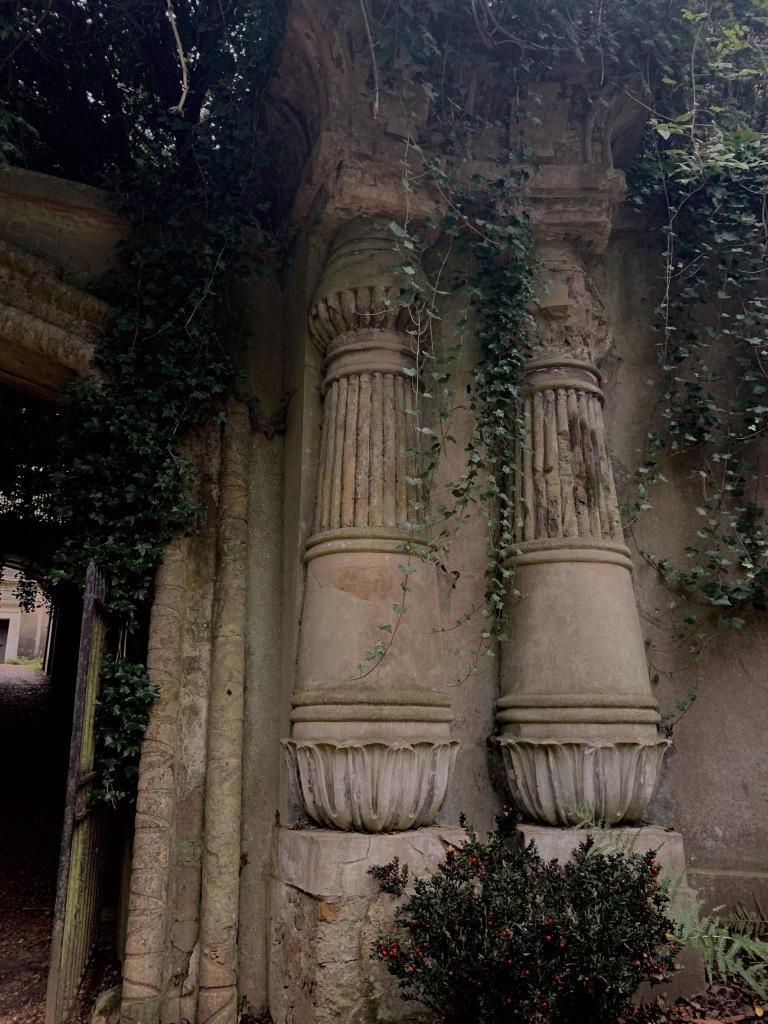
Egyptian Avenue
One of the reasons why so many have visited Highgate Cemetery is it’s more well-known architectural features like Egyptian Avenue. Entering an archway flanked by carved columns and tall obelisks, it leads to a dark solemn passageway. Originally a tunnel, although the roof has since fallen through from age, a canopy of entangled trees has formed a makeshift cover overhead. The avenue houses eight private vaults. All of which can hold up to twelve coffins but none have been used to that capacity, and they all have a heavy cast-iron door to seal them. While our tour guide said they weren’t particularly popular given the Victorians didn’t like the sunless and sombre location of the vaults, they still seemed to be a prized resting spot as some vaults even bare the occupants living address. It’s almost as-though they’re advertising how well off they have been in both their life and death.

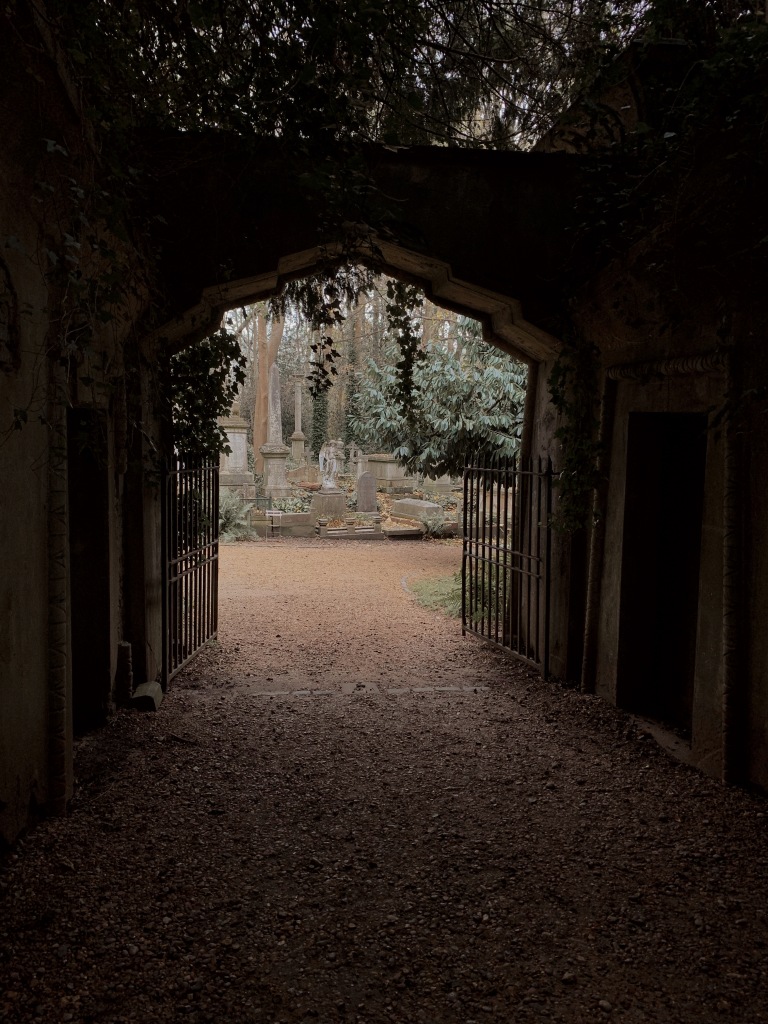
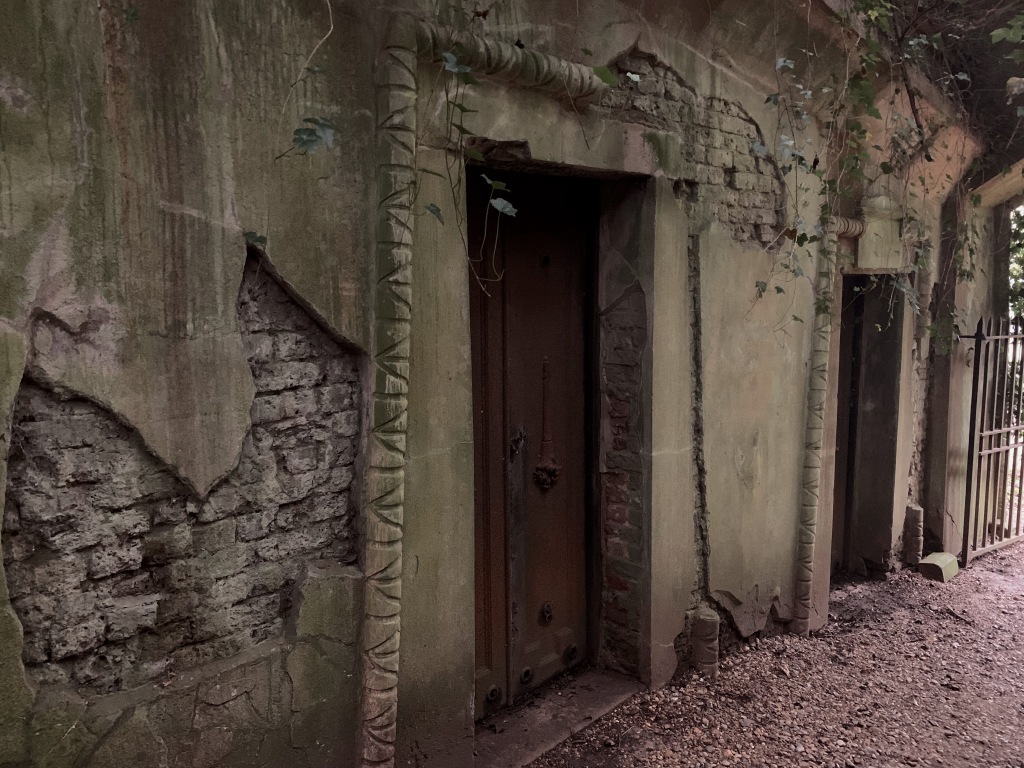
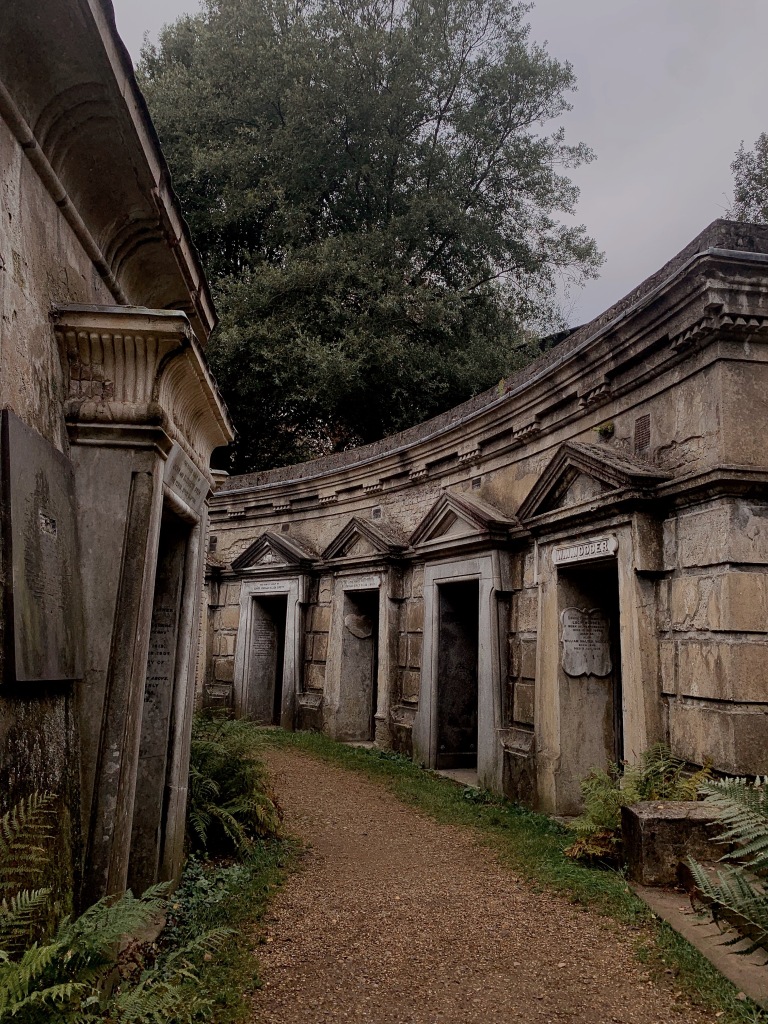
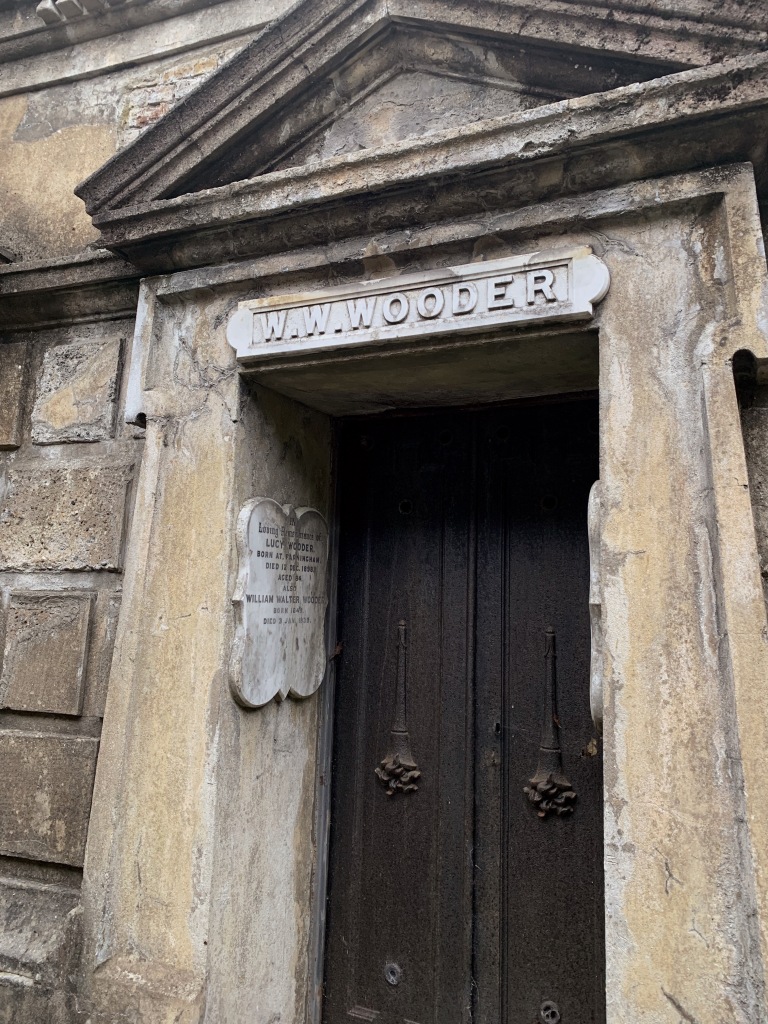
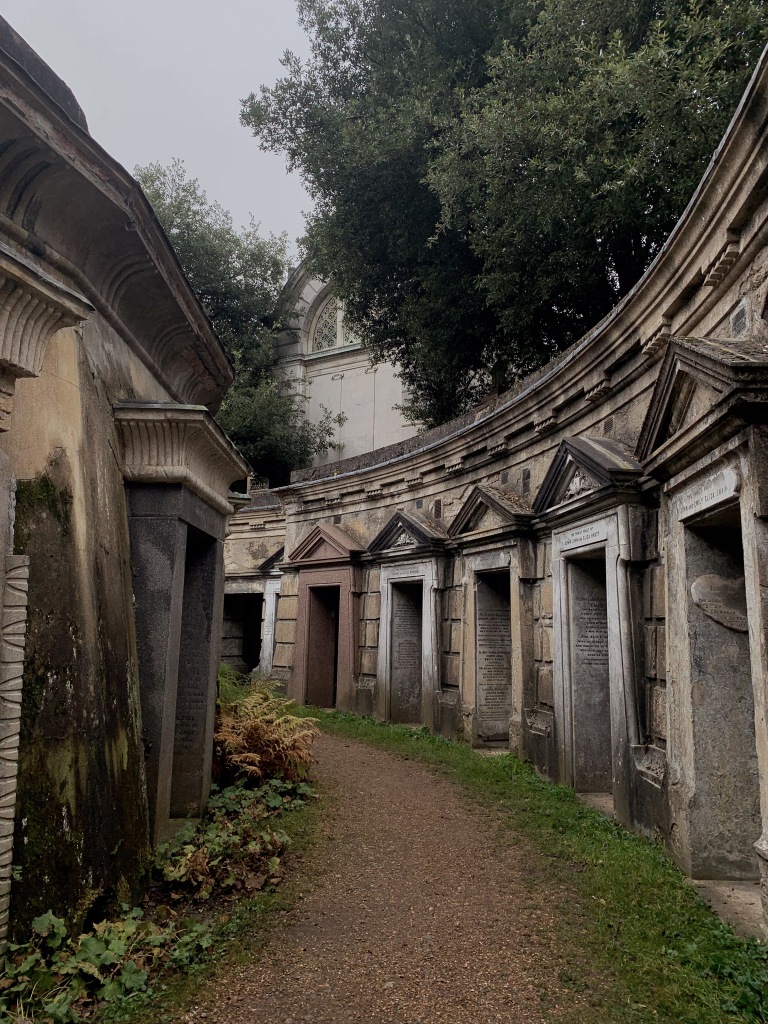
Circle of Lebanon
This is like the crown jewel of Highgate -or the Mayfair if Highgate was a monopoly board as our guide stated. It’s what people go to see and it’s the location used for programmes/films like Fantastic Beasts. It’s described as the heart of the West Cemetery and the architecture is so so beautiful. From Egyptian Avenue you enter the Circle which is a bit like a circular a trench, with vaults on the inside and outside of the way. The earth that forms the inner circle once held a huge cedar tree, believed to be over a hundred years old before the land was even used as a cemetery. This has recently been removed, and replaced by a new sapling, due to age and potential danger. There are twenty chambers built into the earth of the inner circle, all with cast-iron doors bearing a torch pointed downwards with a large flame still burning; symbolising life extinguished but the flame shows the continuation of the soul. These vaults proved so popular that sixteen were later built on the outer circle, facing in, which can hold fifteen coffins each. One of these vaults holds Radclyffe Hall, the poet & novelist, and her partner Mabel Veronica Batten. Hall is best-known for her novel The Well of Loneliness, which was put on trial and banned for it’s overt lesbian themes and championing lesbianism. She’s considered a trailblazer for this and still has fresh flowers laid for her by admirers today (in fact, I really wish I had thought to take some flowers with me).
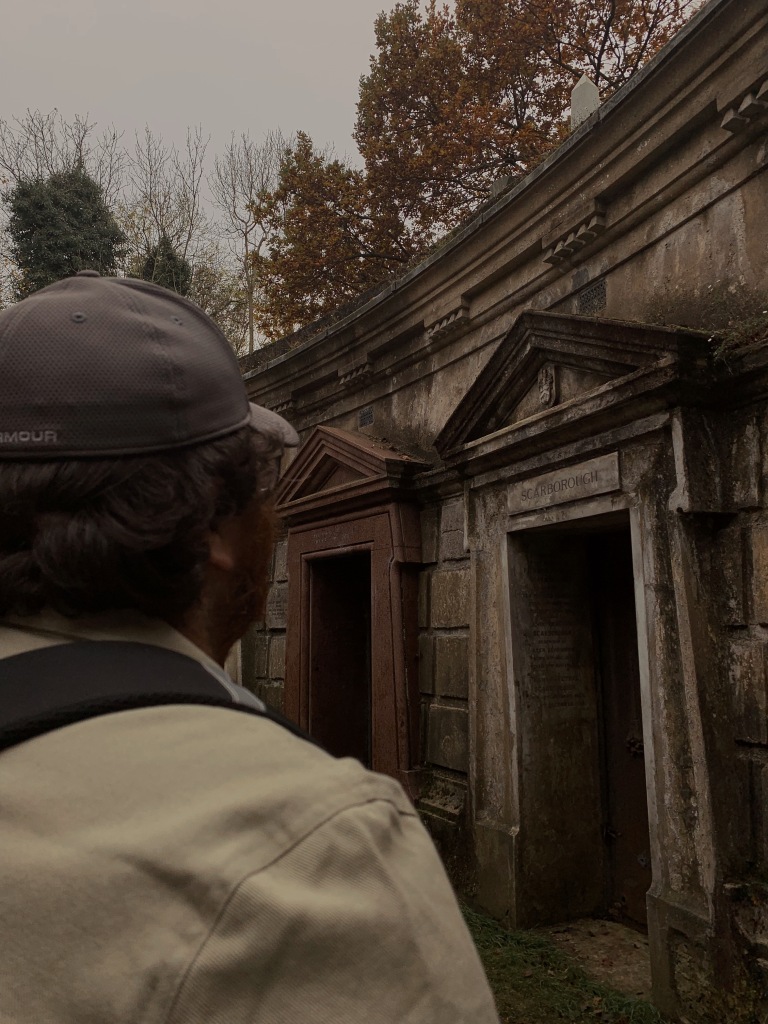
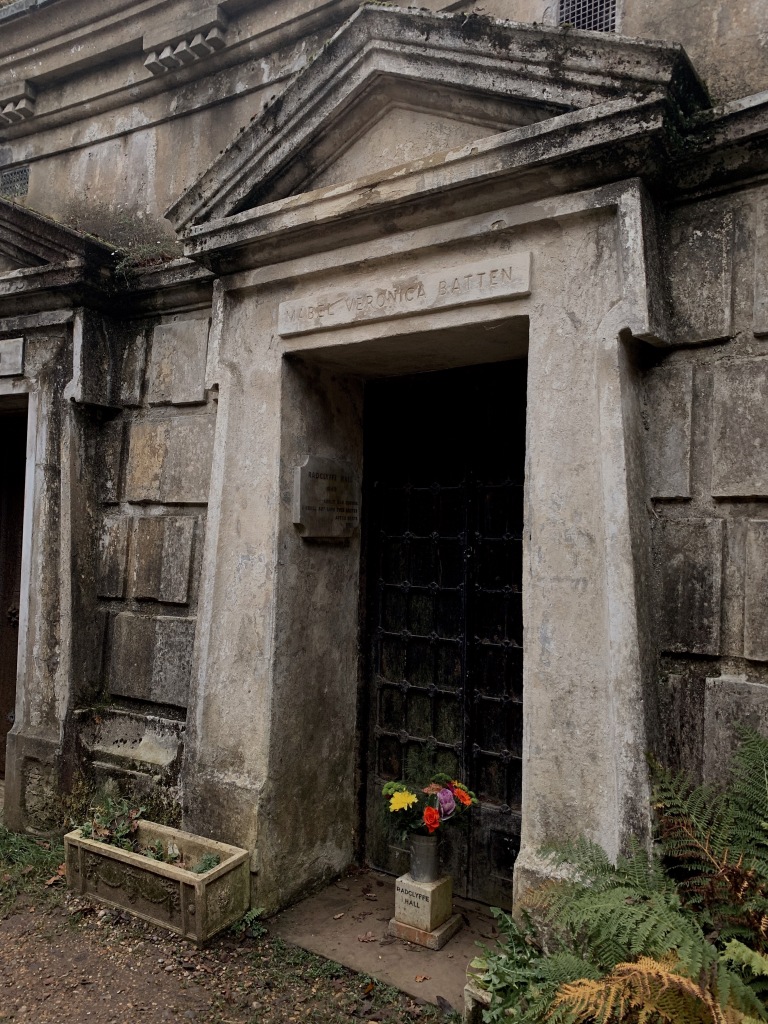
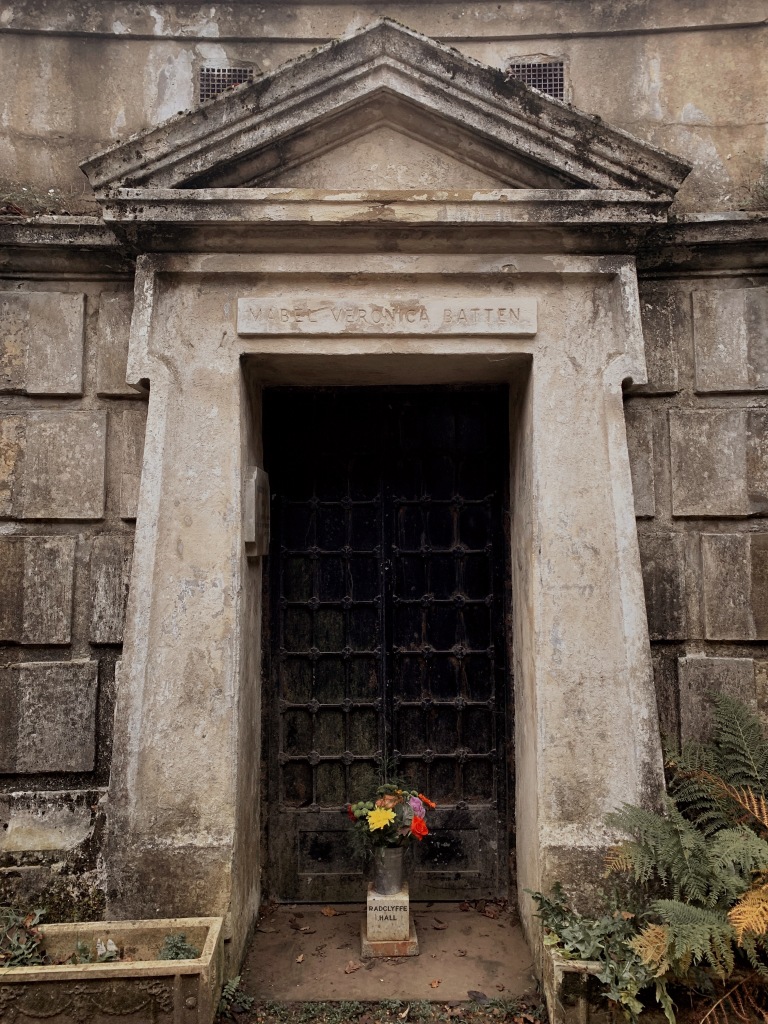
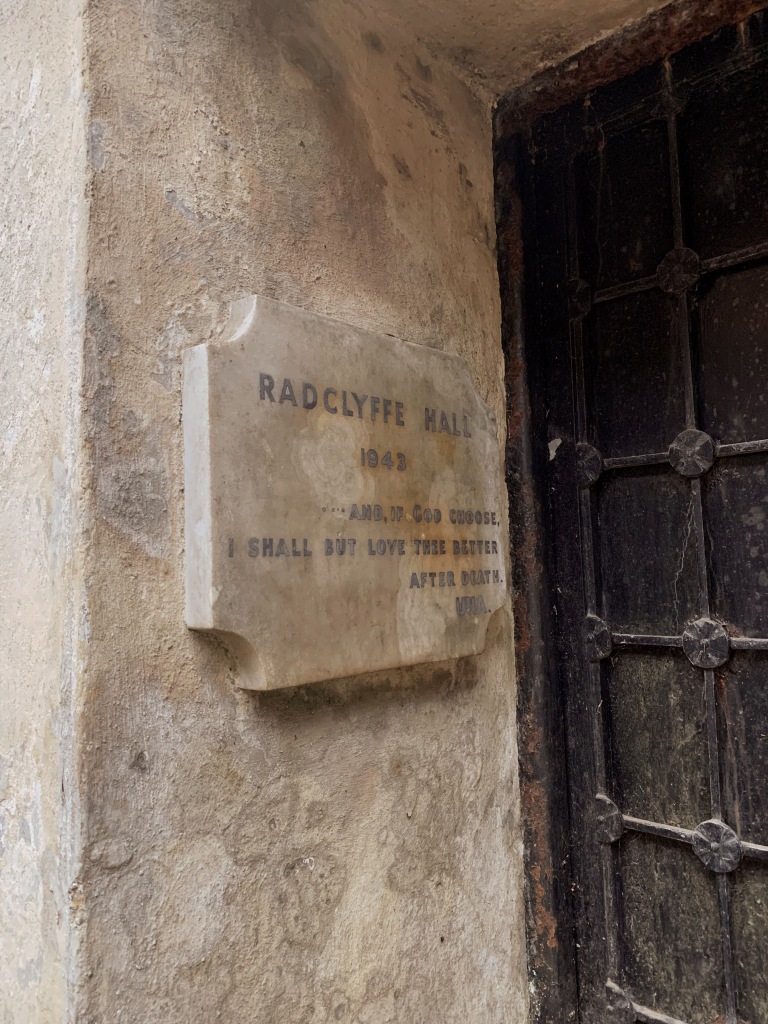
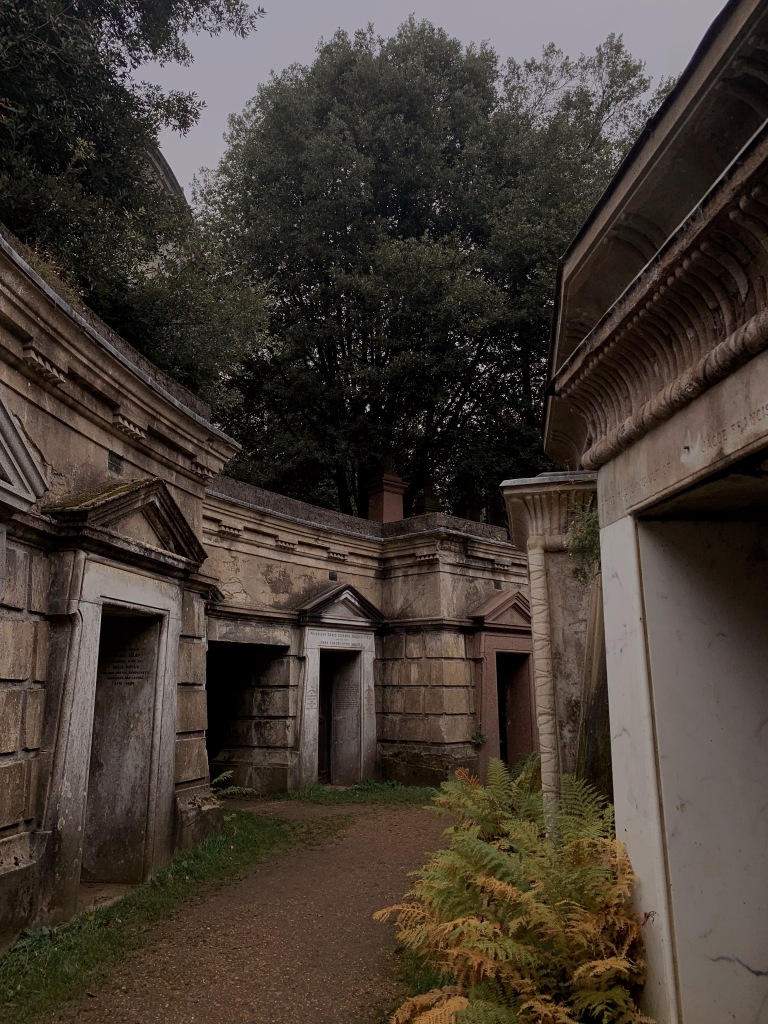
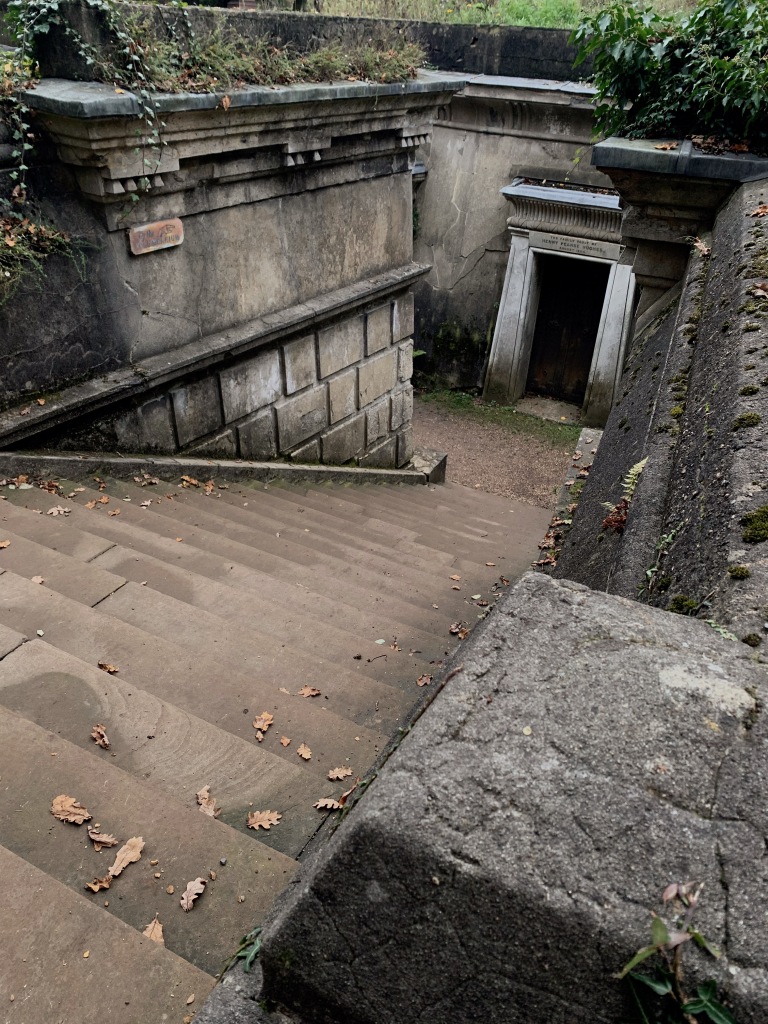
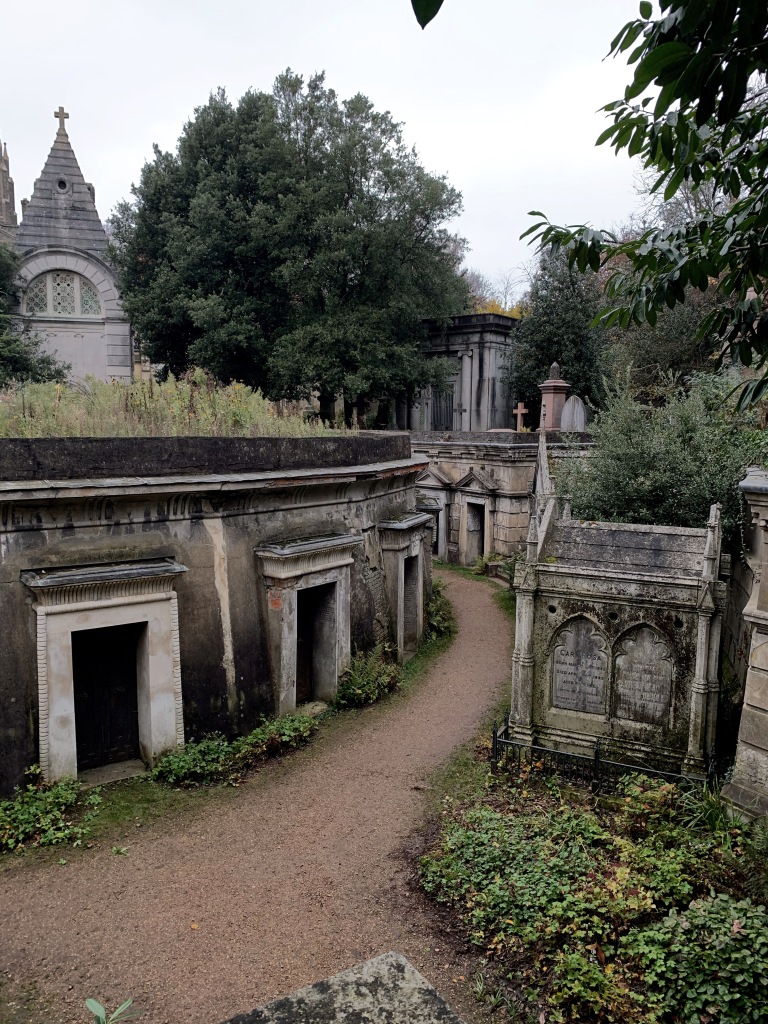
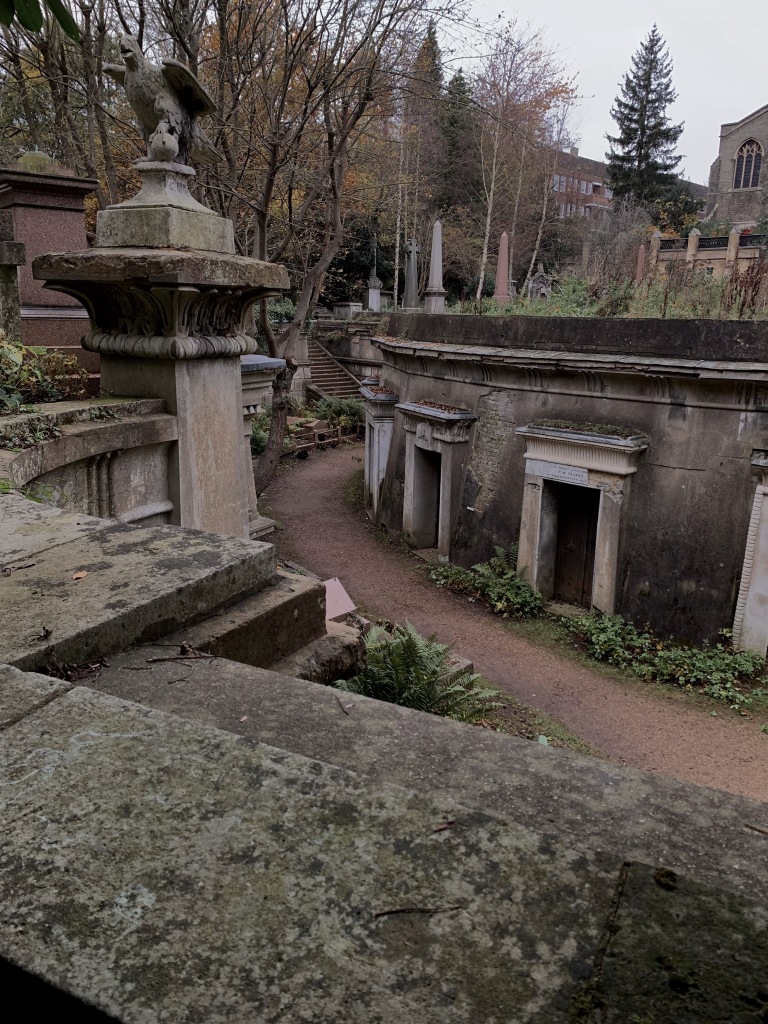
The Beer Mausoleum
Sat on one of the highest spots of the grounds and overlooking the Lebanon Circle is one of the grandest, privately owned monuments in the cemetery. Erected by Julius Beer, he spent around three million in todays money building it for his daughter Ada, who died at the age of eight. She even features in the mausoleum, in the form of a life-sized white Carrera marble sculpture of herself being raised up by an angel; sculpted by Henry Hugh Armstead. It also holds a doomed ceiling with a gold mosaic, intricate carving details, and bronze doors. You can’t actually enter the mausoleum but there is a 360 tour online here which shows its’ stunning interiors in such high quality.
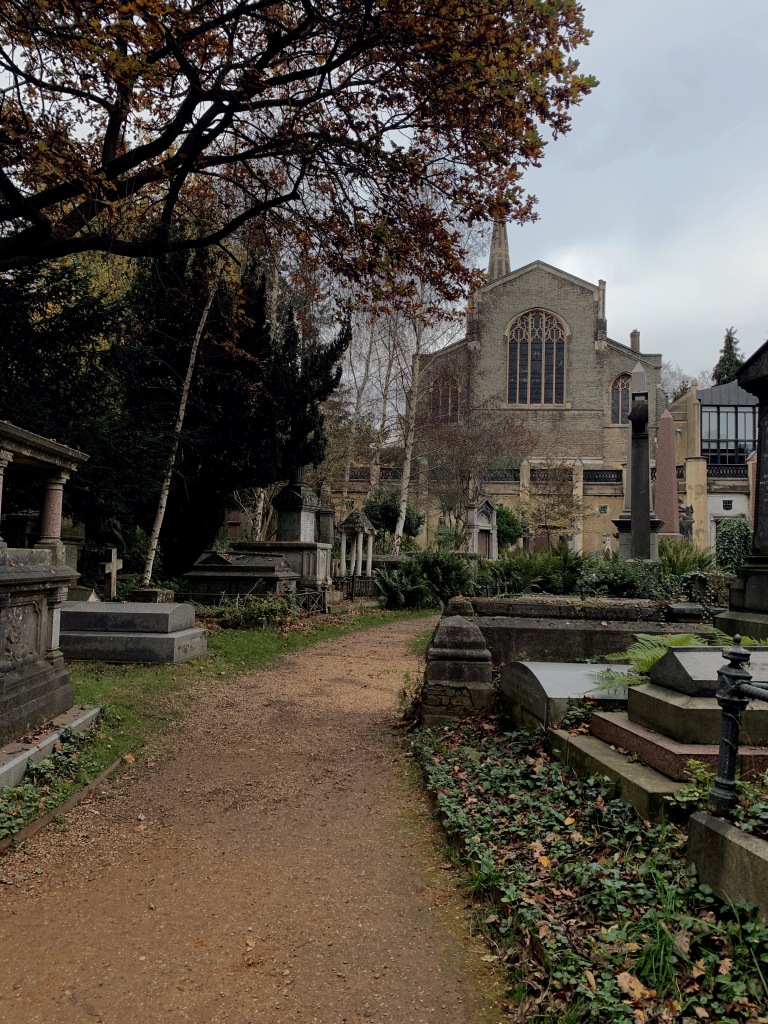
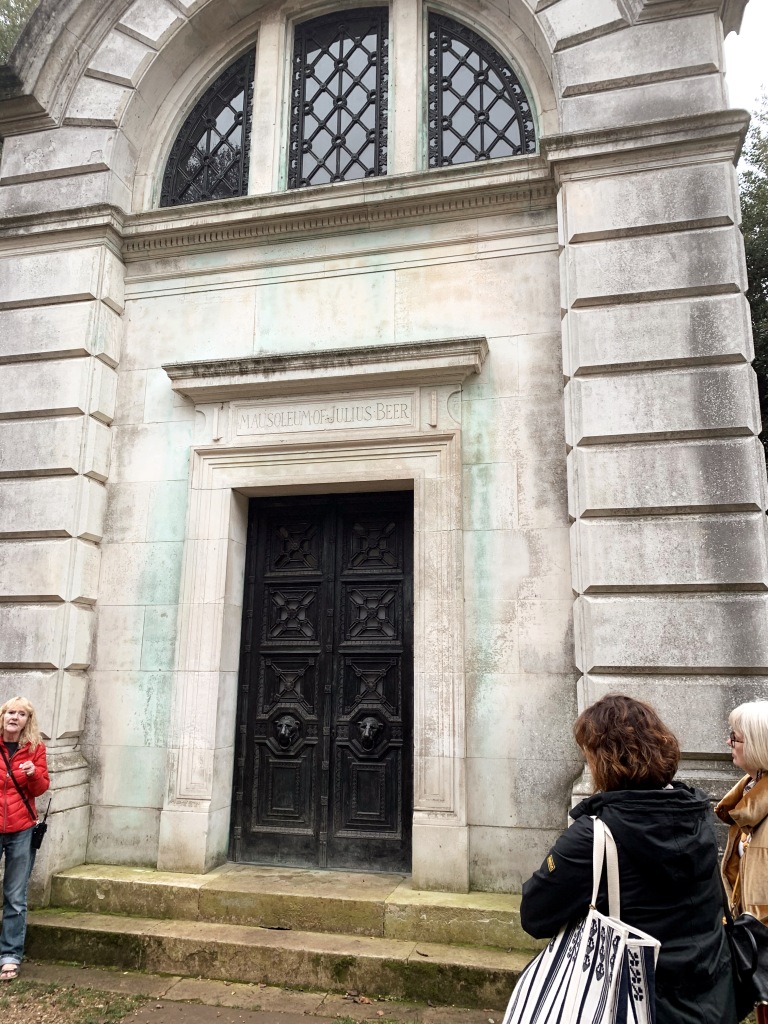
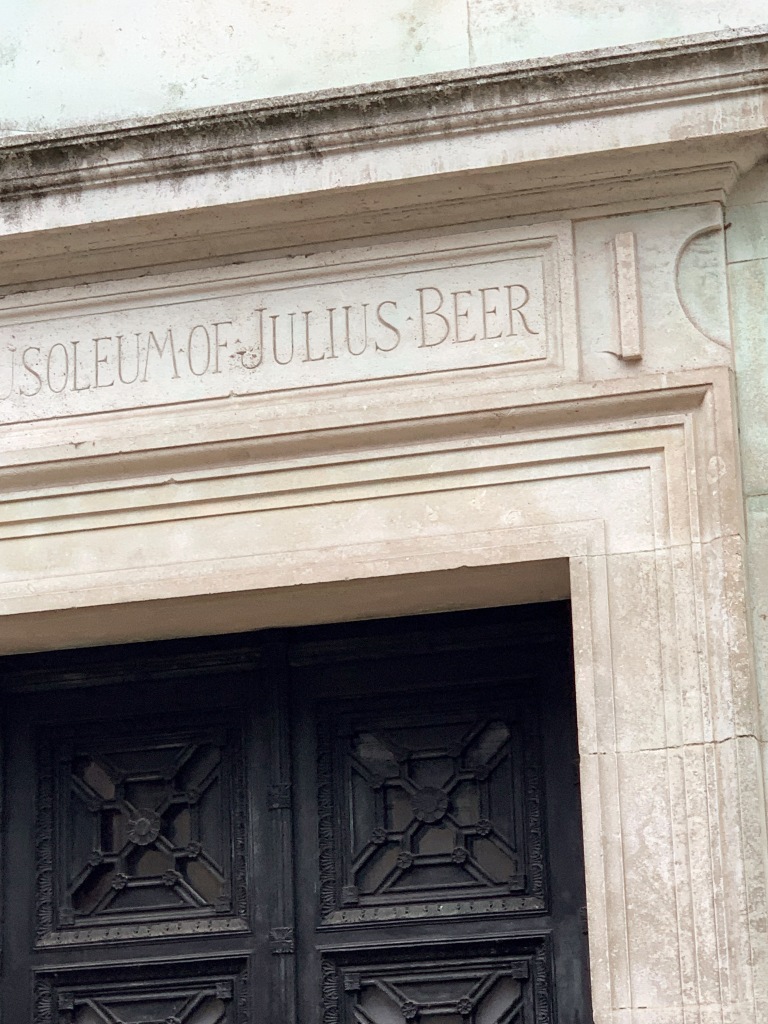
The Terrace Catacombs
Opposite the Beer Mausoleum is the gothic-styled catacombs. It houses 825 loculi (recesses) which can hold a coffin each. Most of them are sealed with a carved slab or an inspection window, but many have been damaged over the years so there are some exposed coffins. The catacombs are lit by glass sky lights dotted here and there, but for the most part it is incredibly dark and you definitely rely on your phone light to see where you’re stepping. What struck me was how beautiful some of the exposed coffins were. Of course there was a lot of rotting wood but the metal edging and almost embellished details were so intricate and quite honestly, pretty.
The stories we heard and the names we learnt about during our tour were truly my favourite part of the day. The Scottish surgeon Robert Liston was interred in the Terrace Catacombs and was known as ‘the fastest knife in the West End’. In an age where anaesthetic was not around, speed was key and this is where Liston excelled; being able to complete an amputation in under thirty seconds.
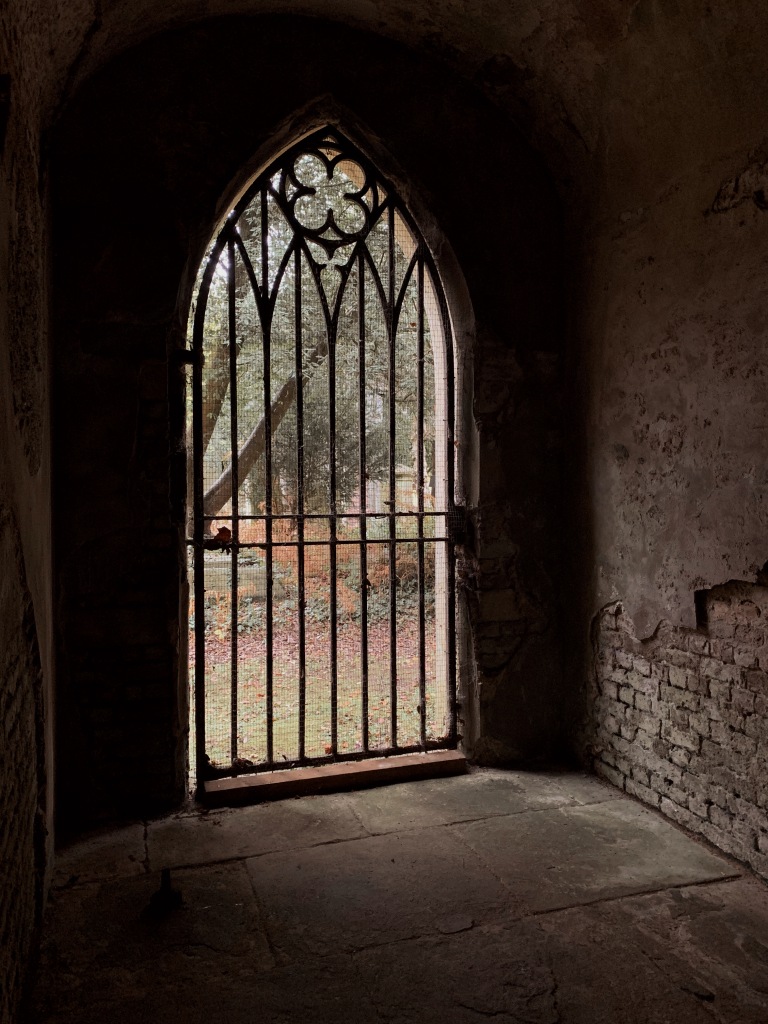
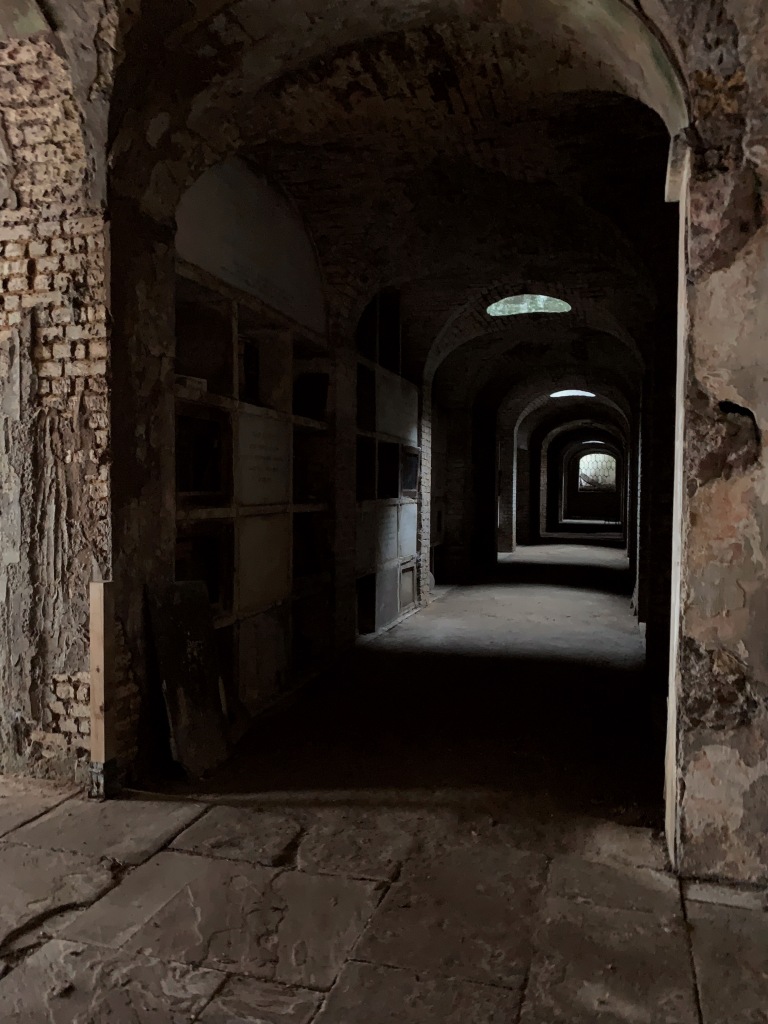
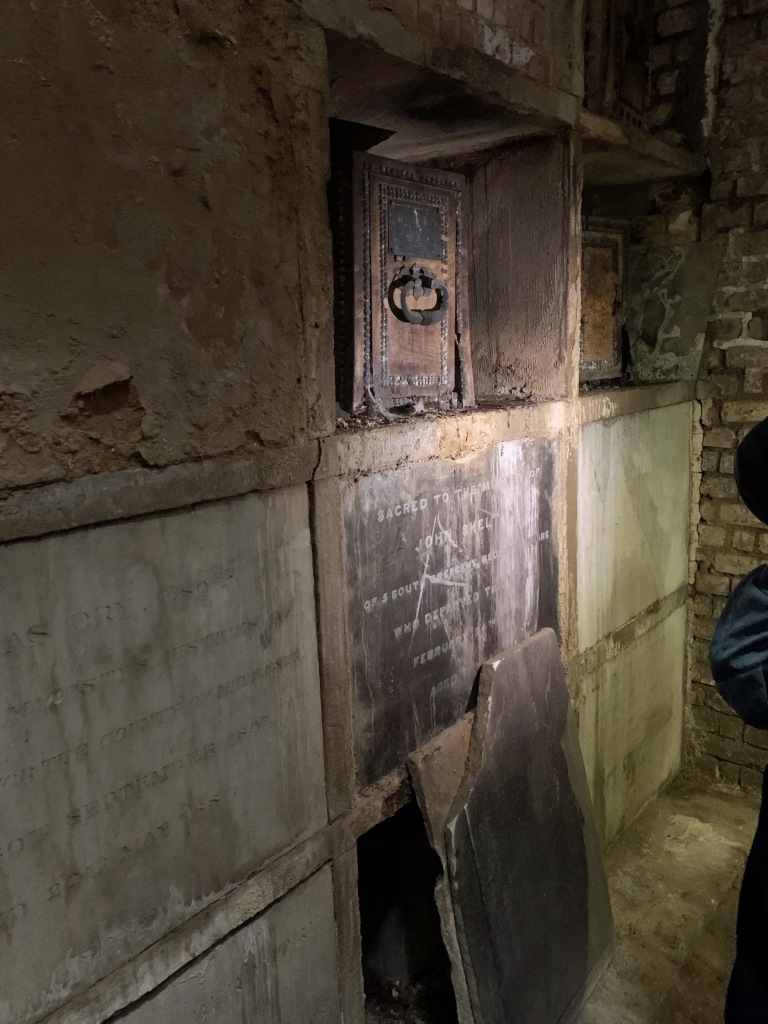
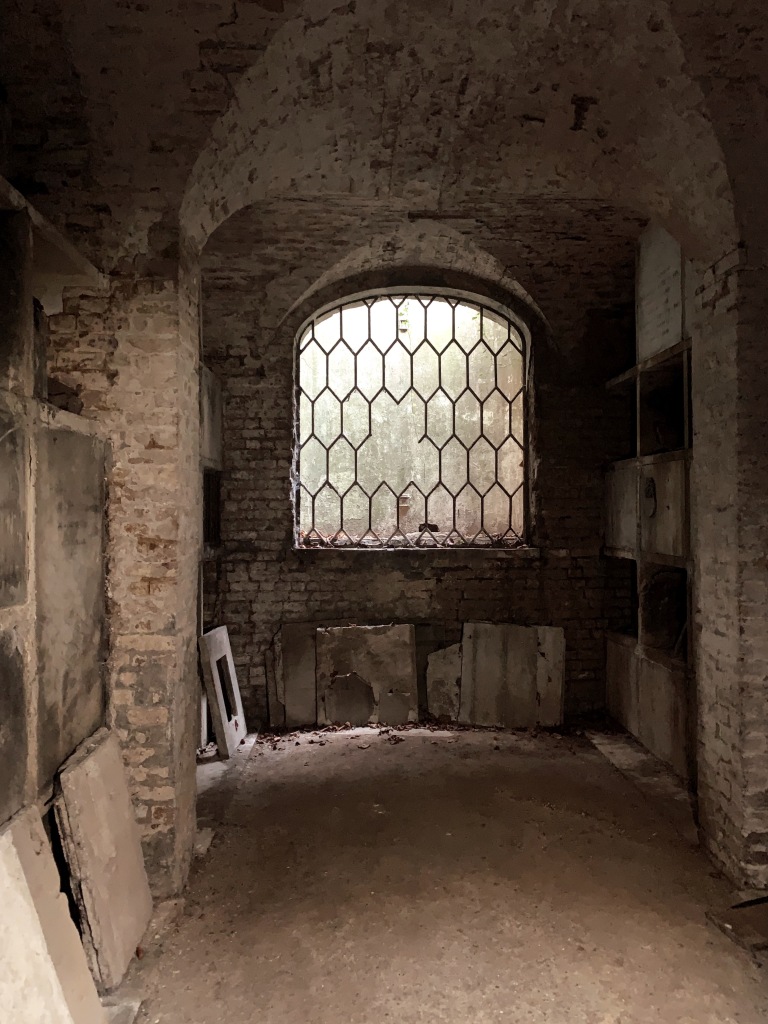
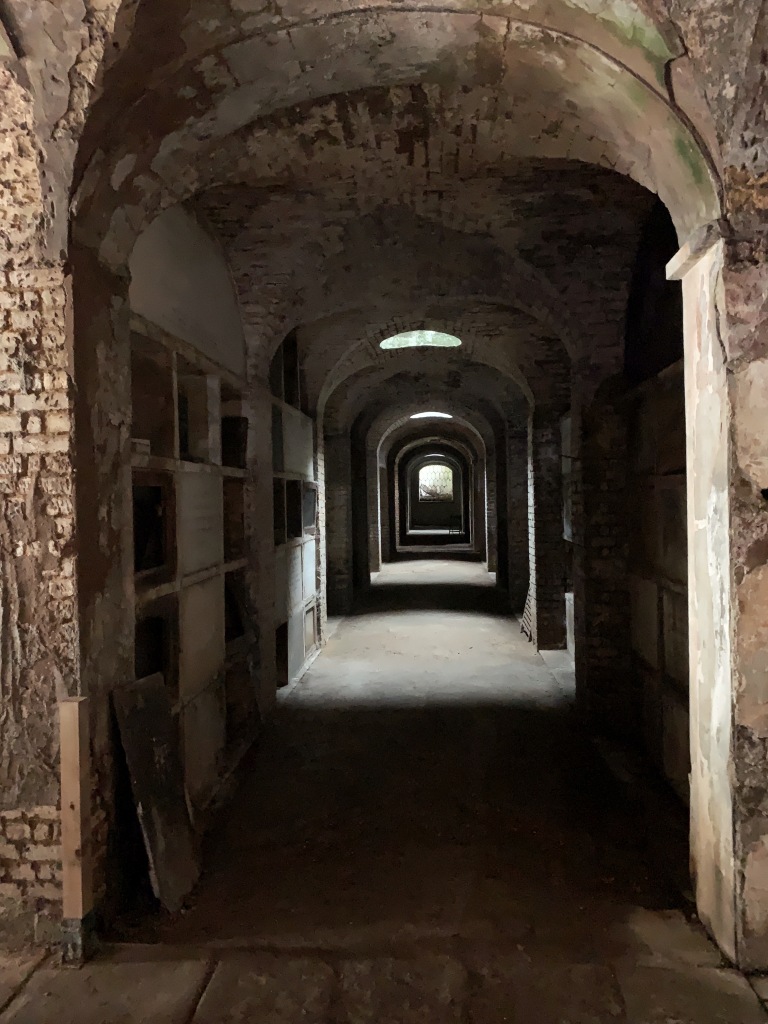
In between the more well-known areas I’ve just mentioned, our tour guide pointed out certain tombstones and talked us through more details and symbolism which while they are so interesting, I really can’t go into them all here. She also mentioned little facts and nuggets of information, like the Highgate Vampire. She did ask who already knew about it but I was far too embarrassed to raise my hand, knowing that I’d learnt about it in the trivia section of my Twilight Annual book circa 2008. You can read about the Highgate Vampire in this article by Vice or just go to Wikipedia page here, which is a bit shorter.
As we continued on, our tour guide told us about common graves and how they allowed people who weren’t related to be buried together. They’ve largely disappeared now with only a few still bearing their small wooden cross to indicate their presence. Our tour guide pointed out one which I found so deeply respectful. Having heard about so many ‘big’ names and stories of such celebrities of the Victorian era, it was really lovely to hear about the presence of those who didn’t bear the elaborate memorials but nonetheless, hadn’t been forgotten through time.
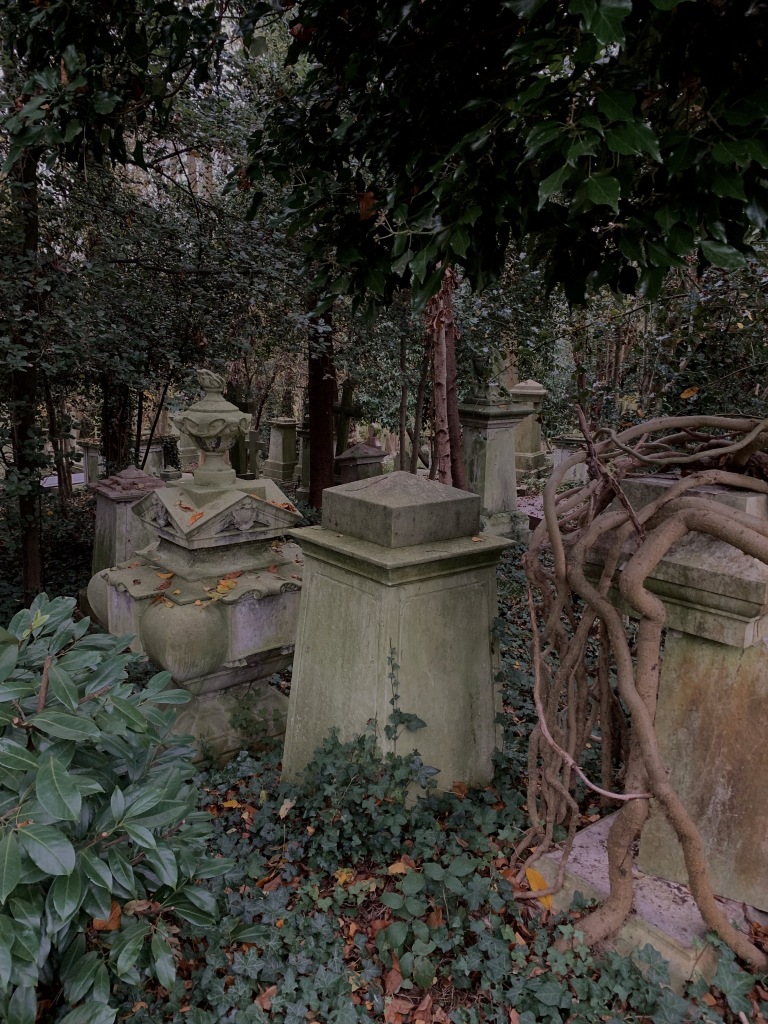



We finished our tour at Goldhammer Sepulchre; which is the first mausoleum built at Highgate Cemetery since 1930. It’s striking in its design and appearance, and overlooks the courtyard and colonnade; the perfect place to stop and take a breather before going back round to revisit certain points from the tour.
As our tour concluded, we made some new friends from our tour and followed them to see George Michaels grave; an unmarked plot next to his mother and sister. It was a bit anticlimactic after all the grandeur we had seen that day, but I could understand why they wouldn’t want anything ostentatious; or to attract a flood of people traipsing around an already fragile and decaying piece of land to adorn the grave of their idol. It just seemed somewhat a shame to not have a headstone, or even be mentioned on the tour.
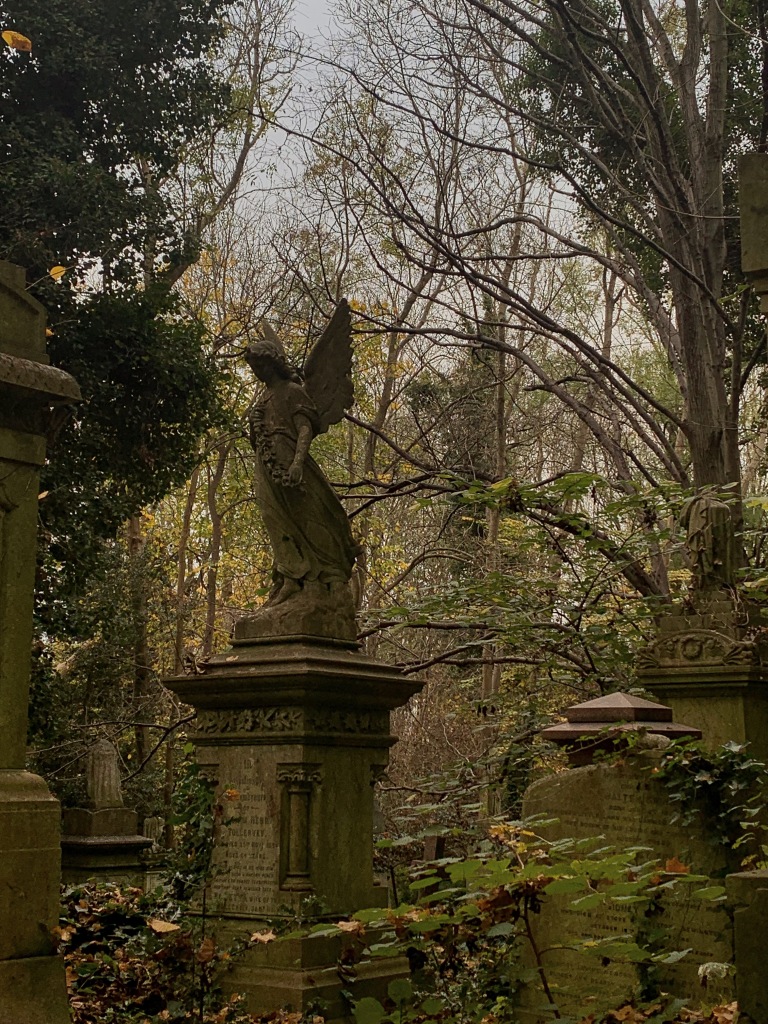
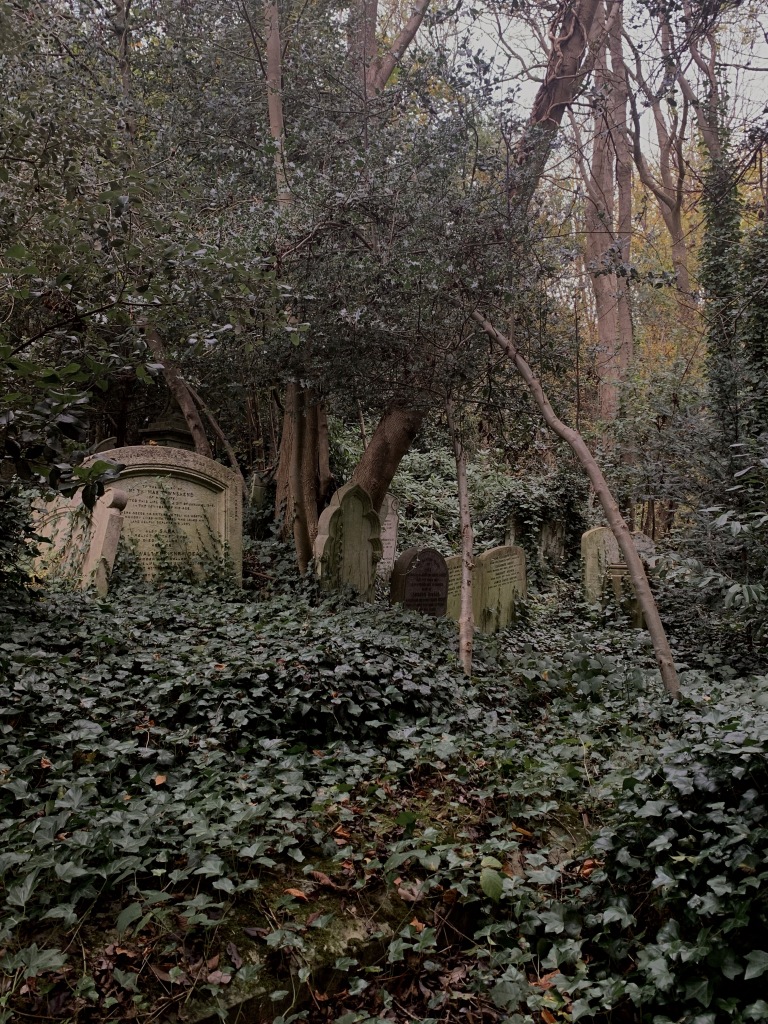
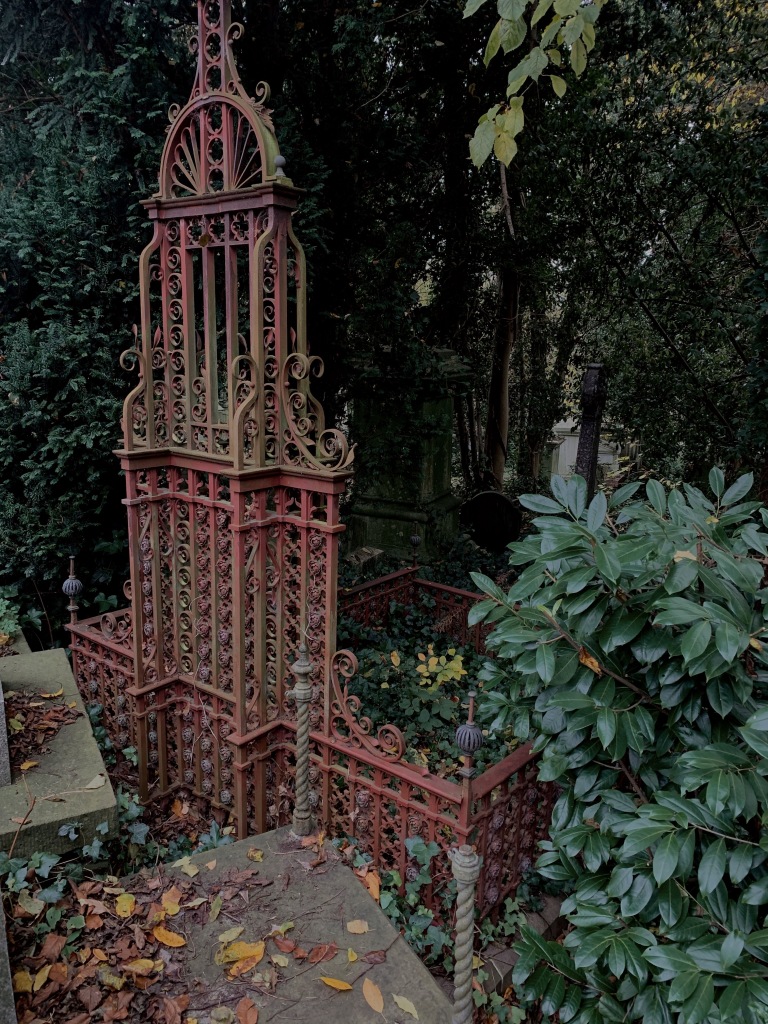

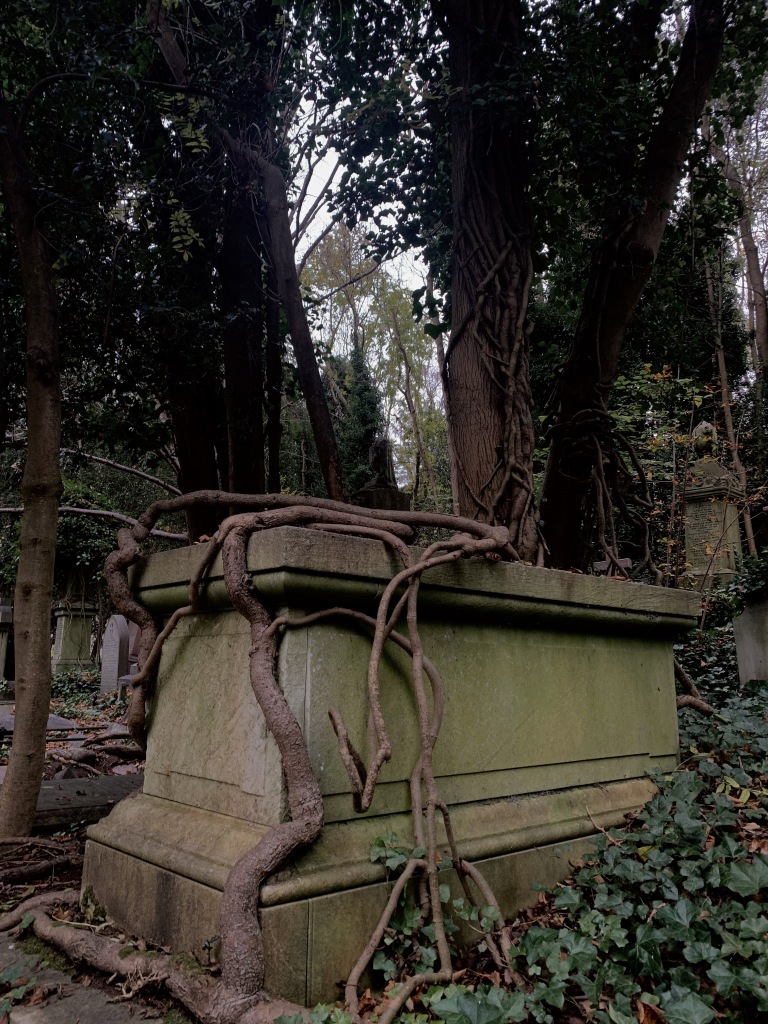
Once we broke off from our new pals, we just had a stroll about the place. It was then that I truly noticed how nature has the upper hand in the cemetery. There was quite a bit of damage to a lot of the tombs and vaults we passed, with roots and vines growing every which way and ivy clinging to headstones or winding itself around sculptures. But there was also such a captivating element to it and I couldn’t help but let my thoughts become consumed by the appearance of it all. So many chest tombs and monuments had been damaged by nature but it also struck me that if you chopped away at those vines or roots, the monument might completely collapse and vanish. On the other hand, if you removed the manmade pieces the forms of nature would have nothing left to clutch onto. That created such an evocative atmosphere for me, the idea that nature has reclaimed, and really held together this parcel of land. In a time when no one was there to care of it, nature took charge and held it together; and did such a good job in the process that it became so intwined that now it can never be parted. I think there’s something quite poetic to that. The profusion of trees and ivy mixed with a sea of sarcophagi and majestic monuments has a magical charm to it, one I don’t think no amount of photos or words could do justice to.
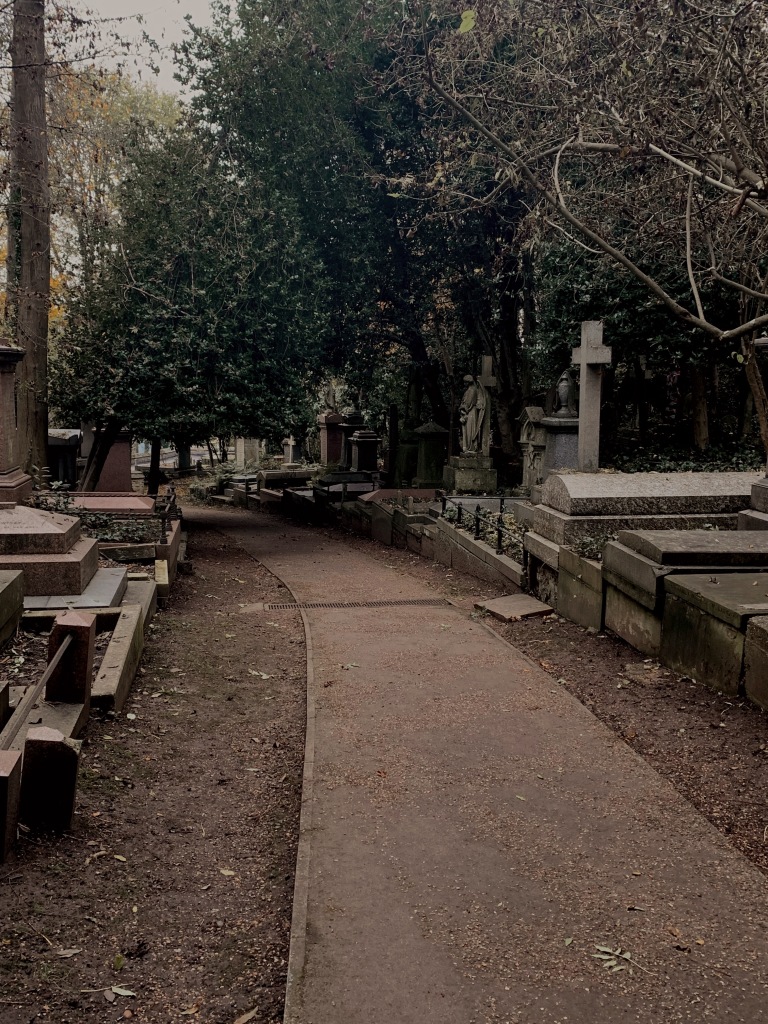
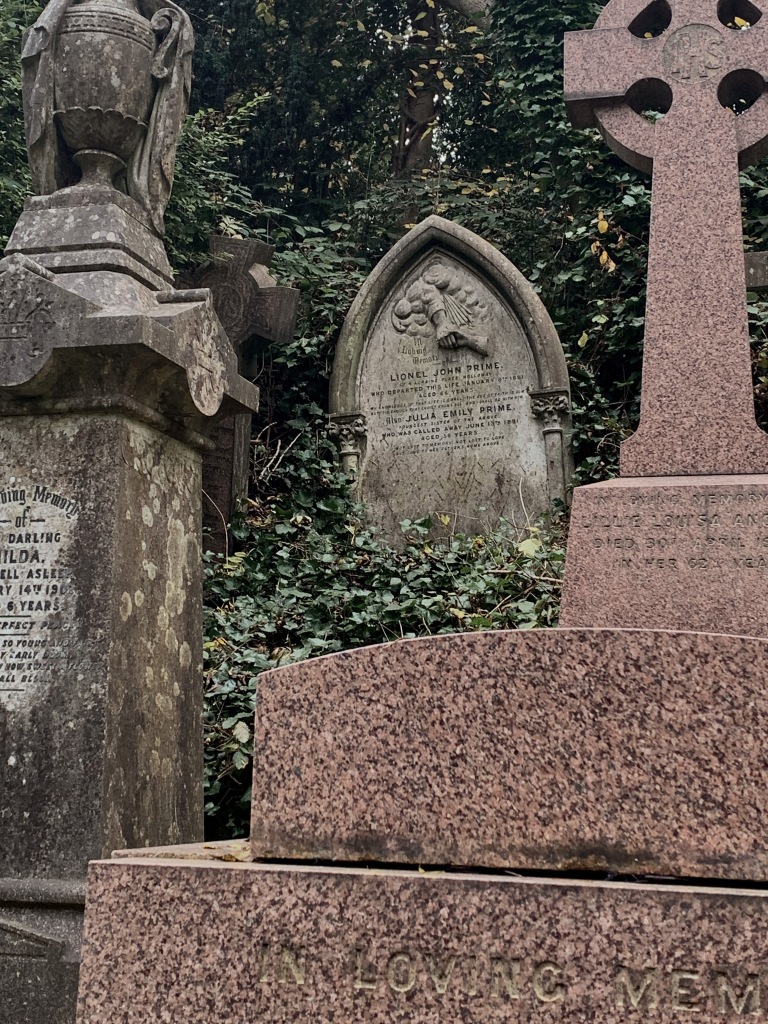
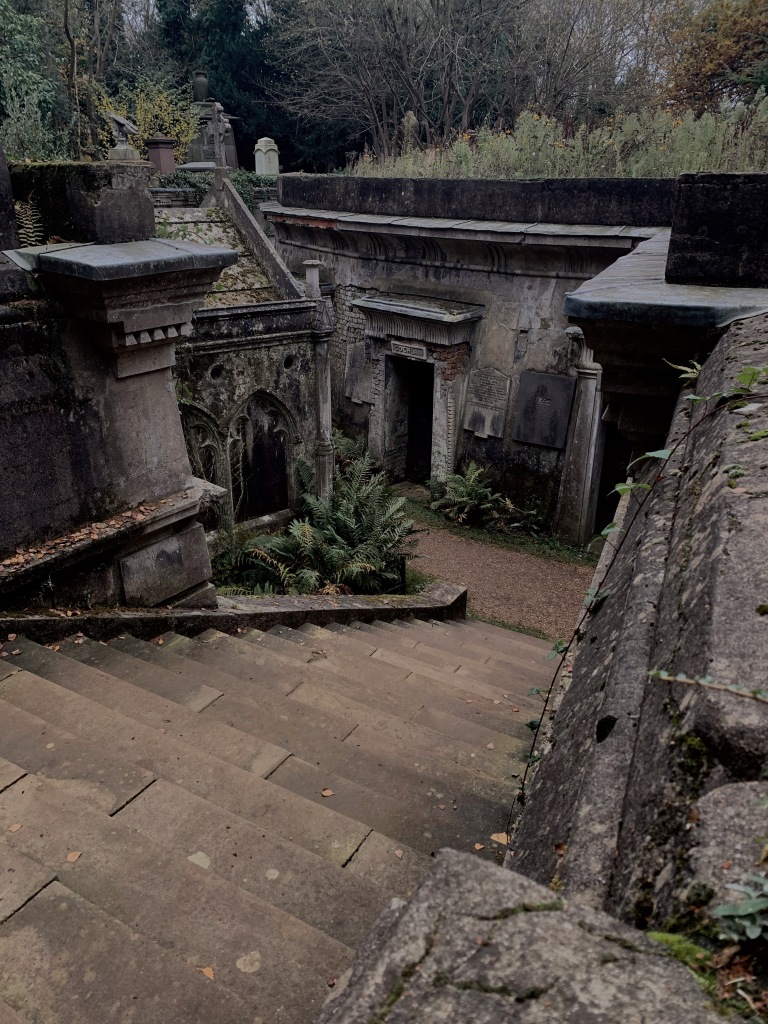
Quick note on accessibility at Highgate Cemetery
The accessibility of the West Cemetery is a bit challenging, while there are many slopes they have quite a steady steepness to them in areas, as well as being uneven and a bit unsteady in parts too. There are two flights of stairs at the Circle of Lebanon which are part of the tour. You can avoid these by going back on yourself through Egyptian Avenue. The tour also begins with the stairs from the colonnade but again, you can avoid these by going an alternative way but I don’t know how easy this would be to link back up with the group if you were on a tour. Also, the terrain inside the catacombs is incredibly uneven and unstable, and it’s not helped by the darkness so I don’t know how much I’d recommend this part of the tour to a wheelchair user (unless you have a real fancy, off-road scooter/wheelchair) – my back aches just at the mere thought of it.
For those with walking aides I’d have to say that other than the colonnade that had a lot of seating, I only saw the odd fold up chair dotted here and there along walkways; which I’m not sure if they were there for visitors or for the gardeners/care takers of the site. We did find a bench along one of the pathways but it looked as though it was added to someones memorial rather than by the site, so we didn’t want to linger.
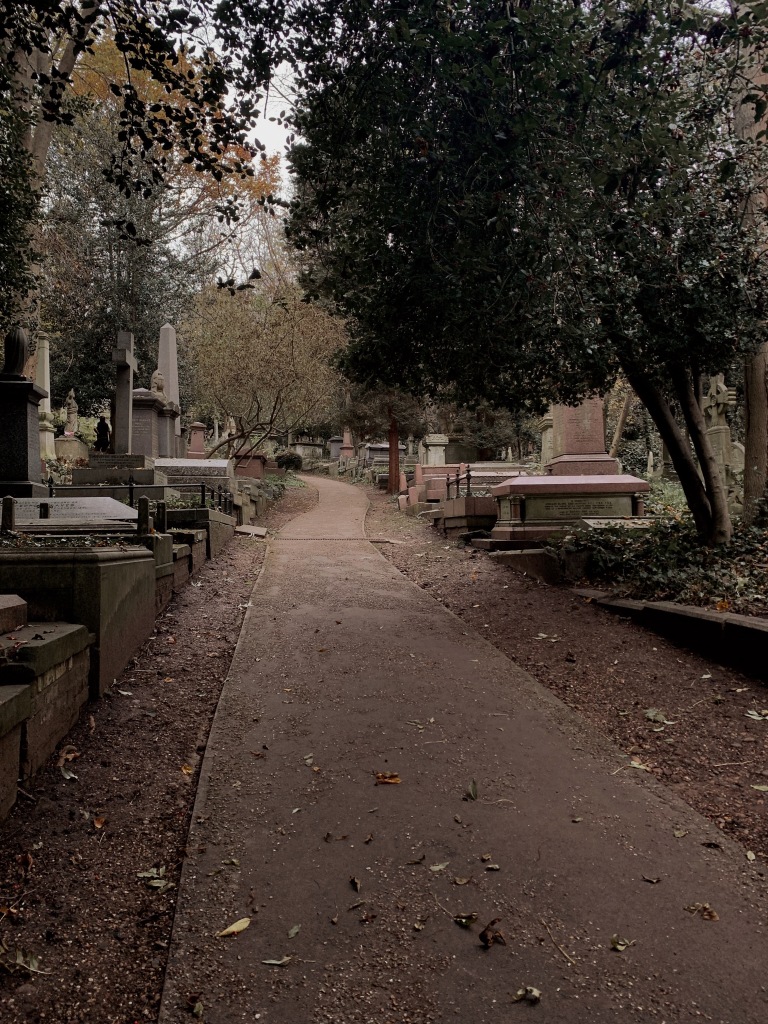
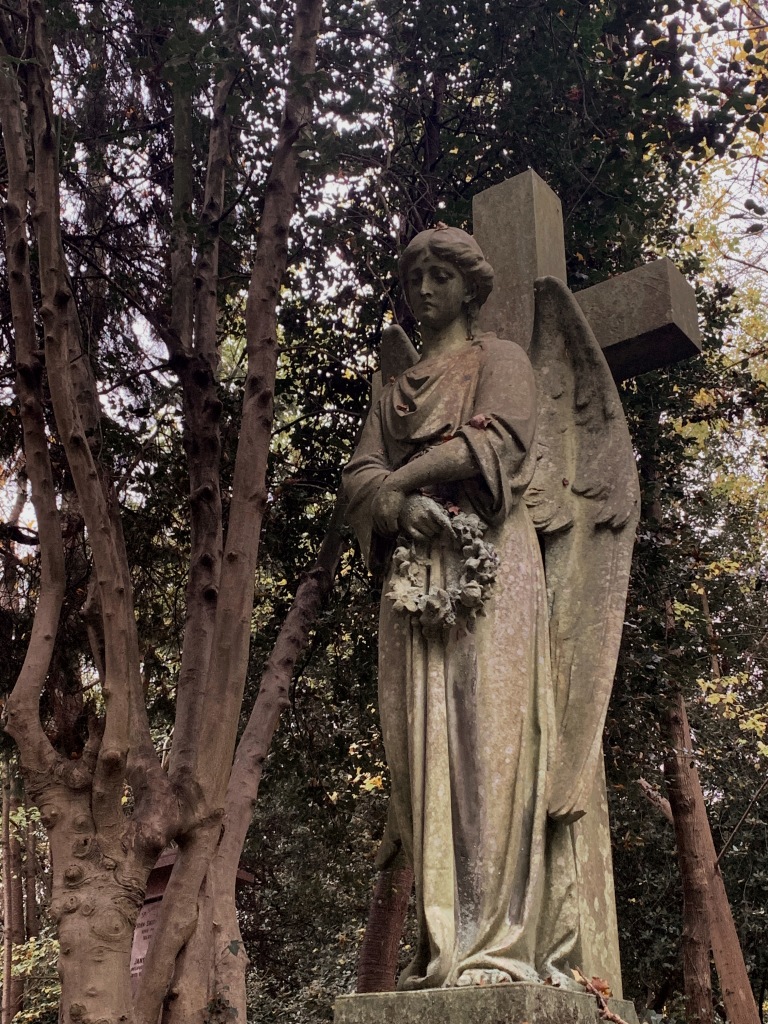
Like the East Cemetery, I would just like to mention that the West side was rescued from its derelict and neglected state by the Friends of Highgate Cemetery in the 1980s. The friends keep up all restoration and conservation on both the landscape and the decay of any sculptures or buildings too. They don’t receive a penny from the state but rather earn everything from their entrance and tour fees, as well as the rare burials that take place. They also welcome volunteers with open arms – which, let me tell you, I wish I lived nearby to be able to volunteer here!
I hope this isn’t too creepy or macabre of a post but I couldn’t help but share it here, especially as I enjoyed the day so so much. It was so off the beaten path in terms of ‘things to do in London‘ but I’m so glad we did it and I can’t wait to do more things like it in the future. We have actually already made a list of things we would like to do up and around London, a collection of places from Atlas Obscura and places we’ve heard mentioned; so stay tuned for those!
Cheerio for now!
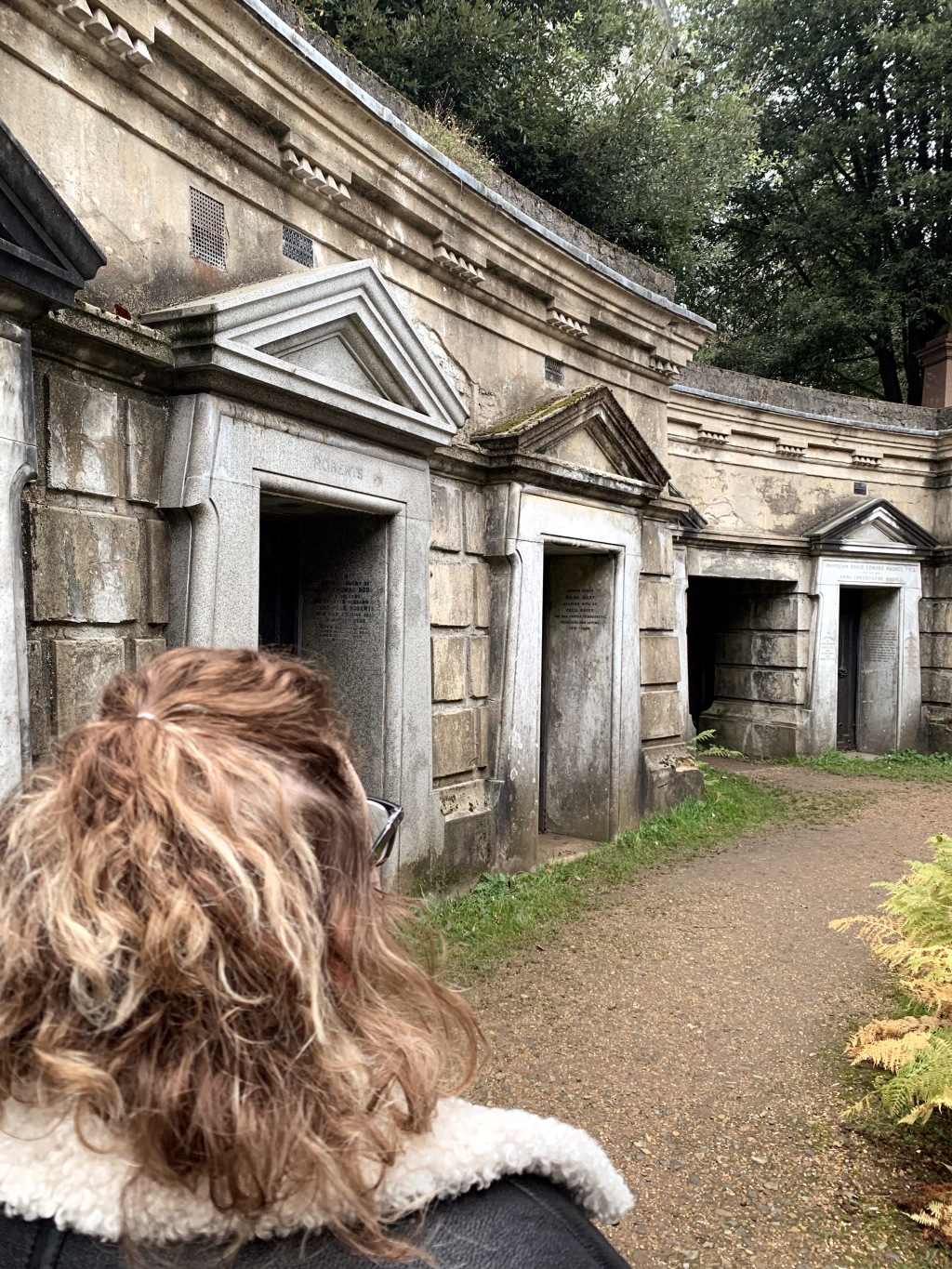

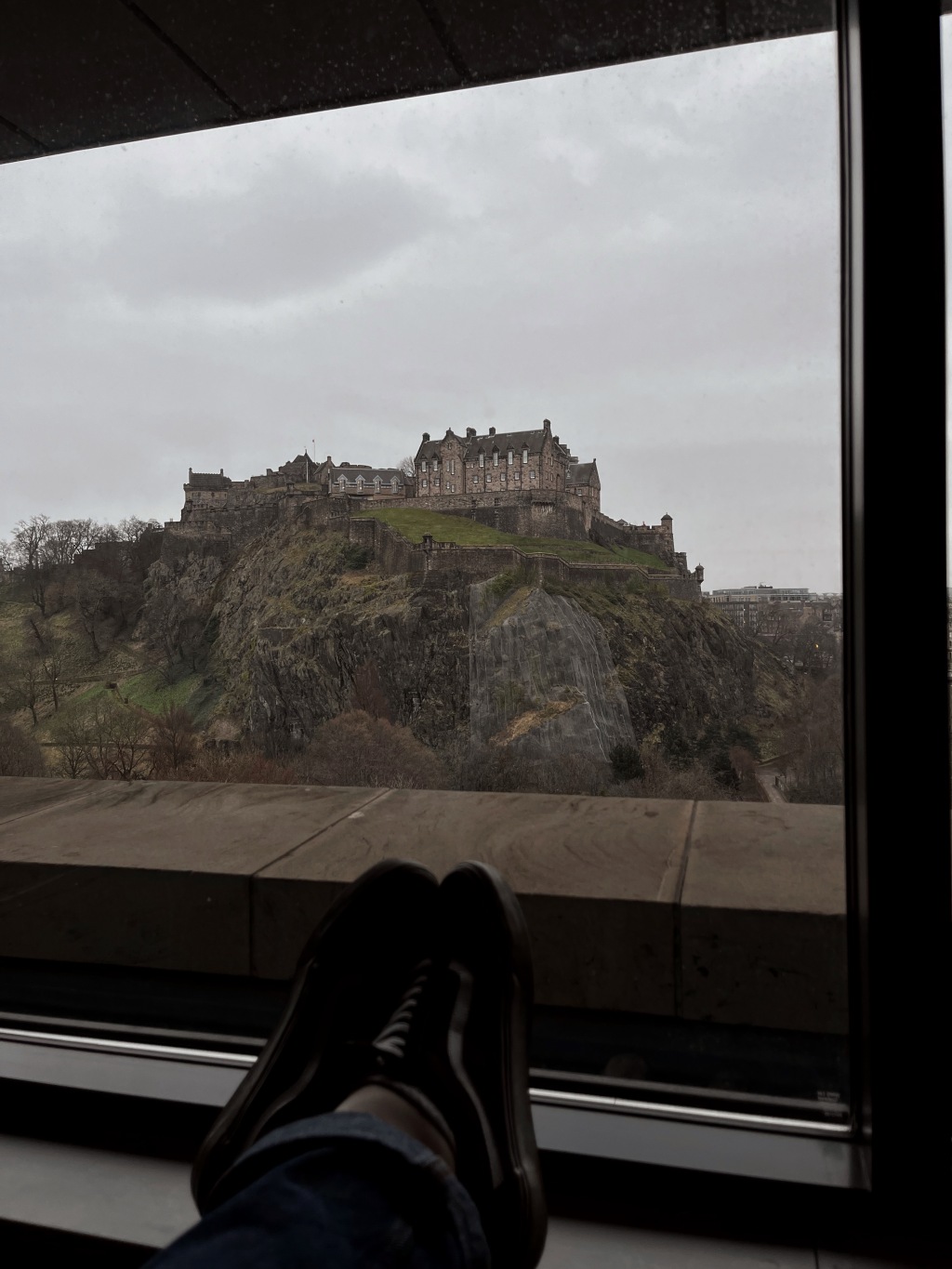
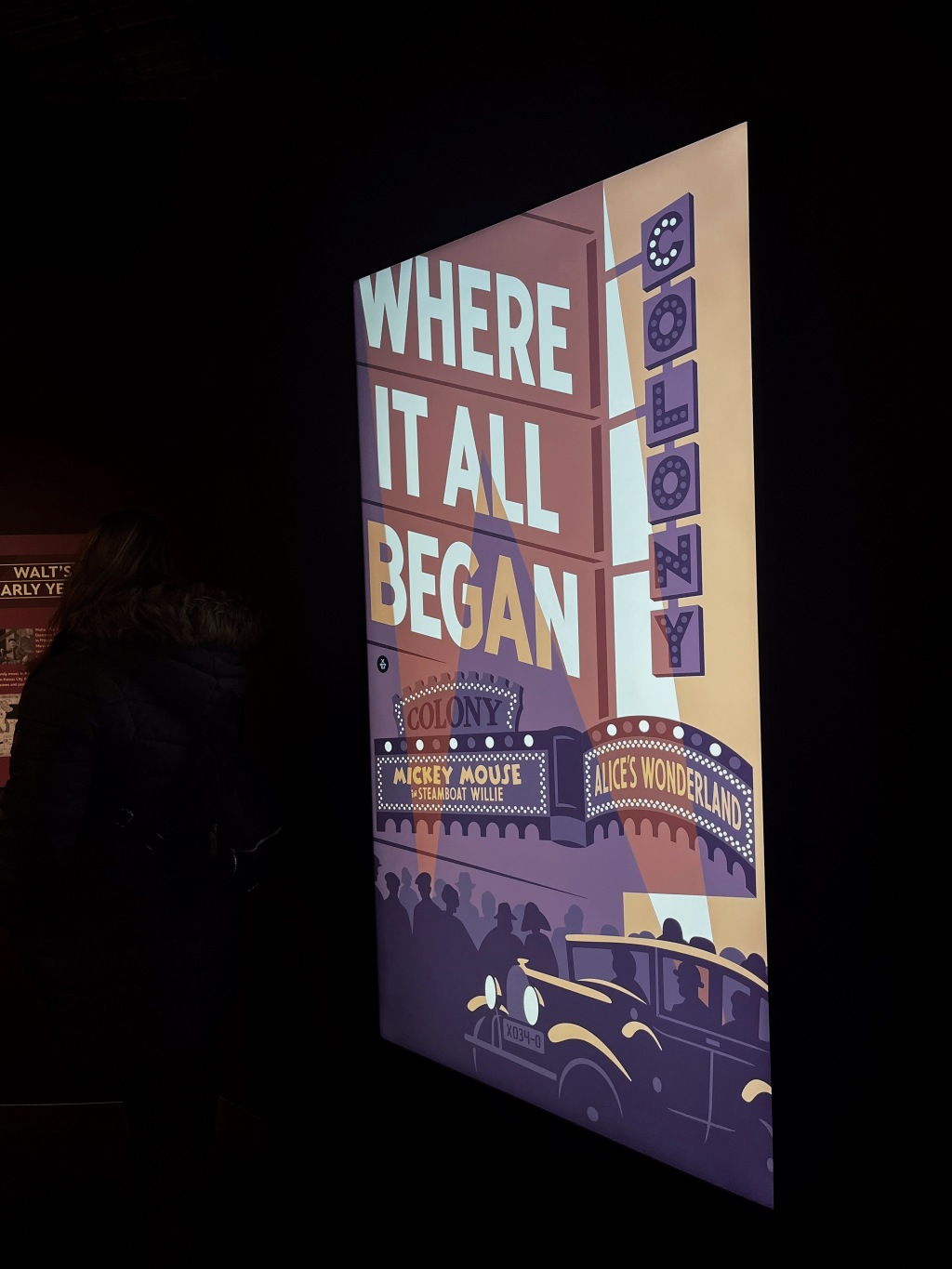
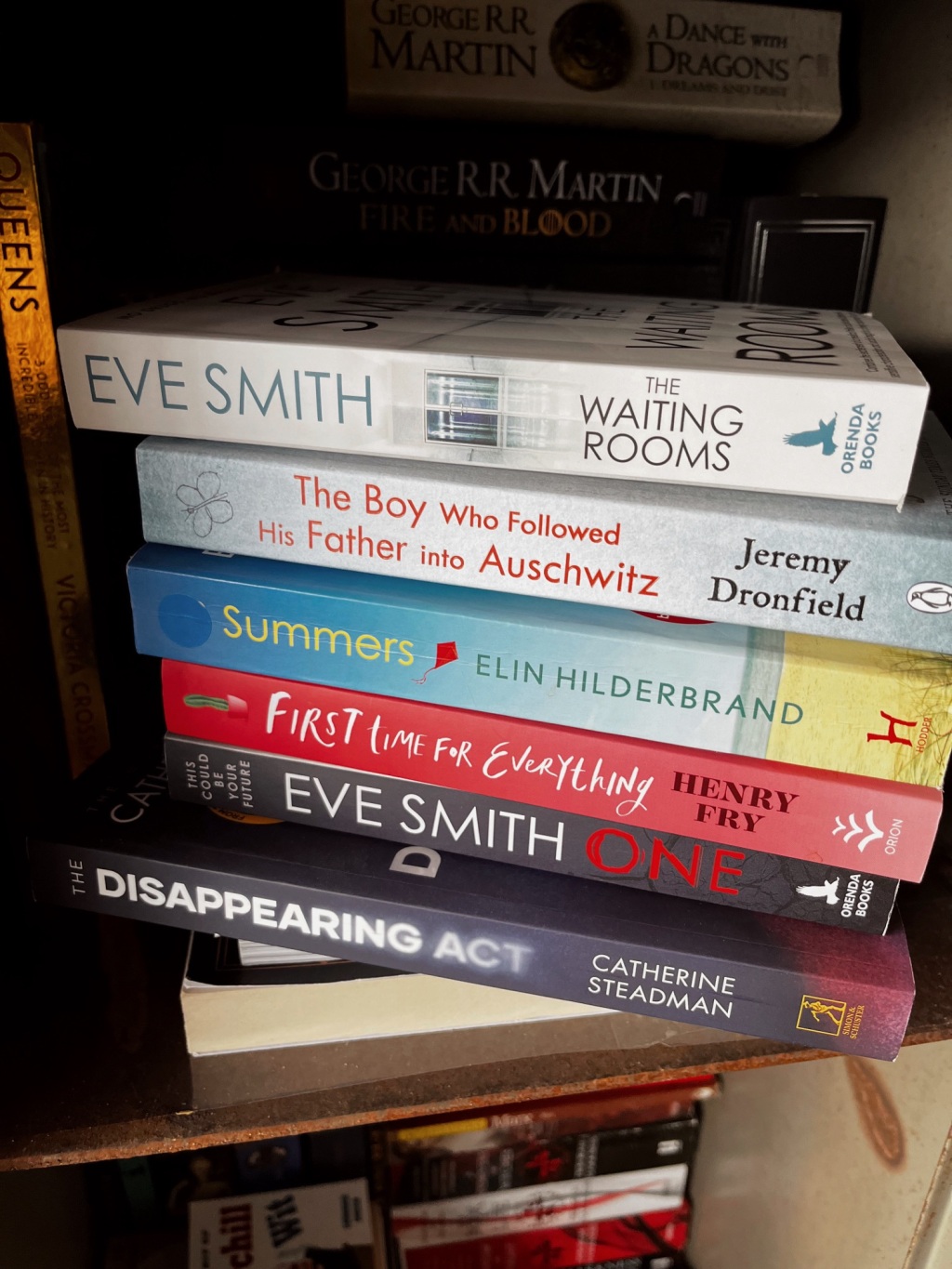

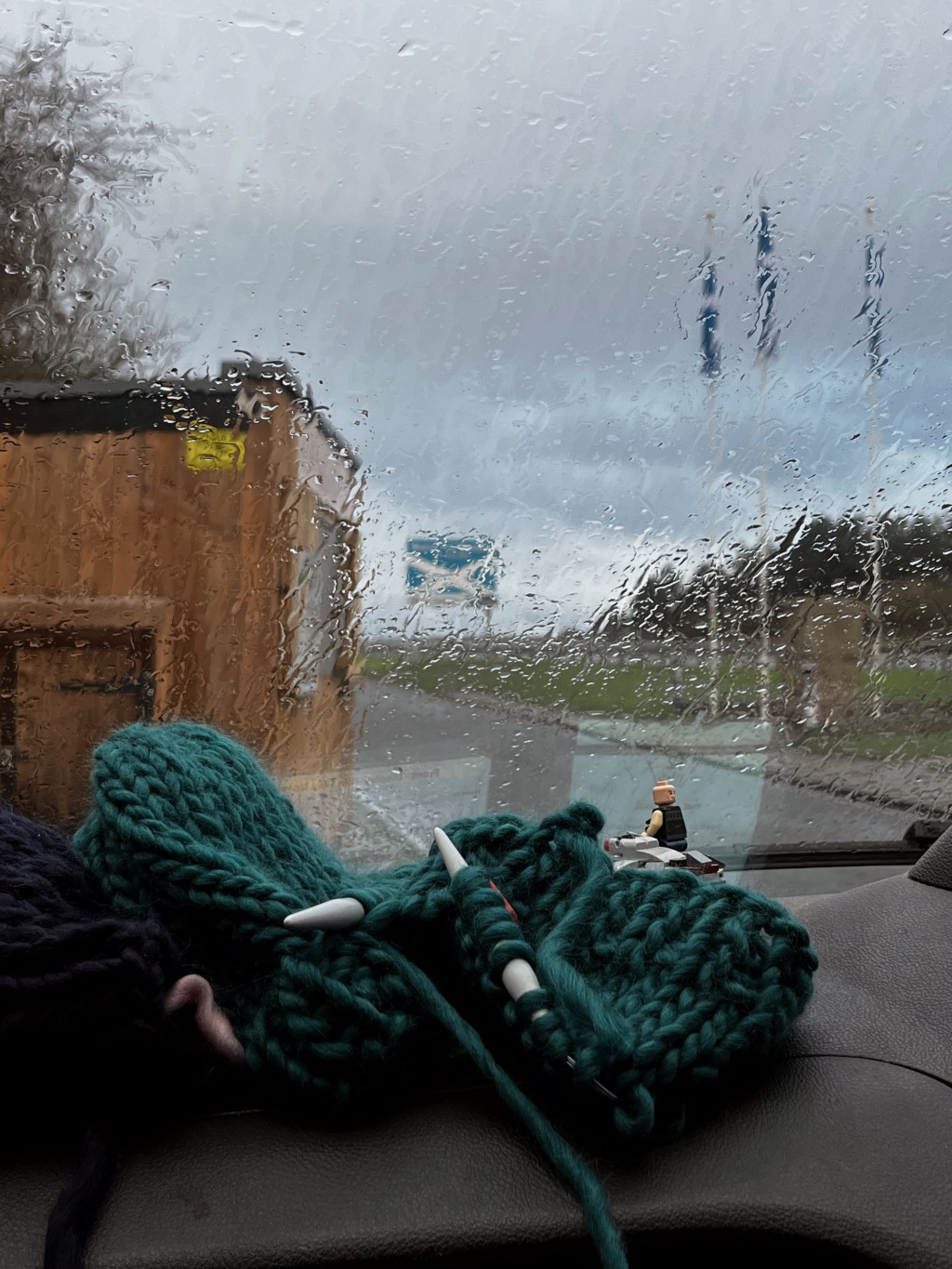
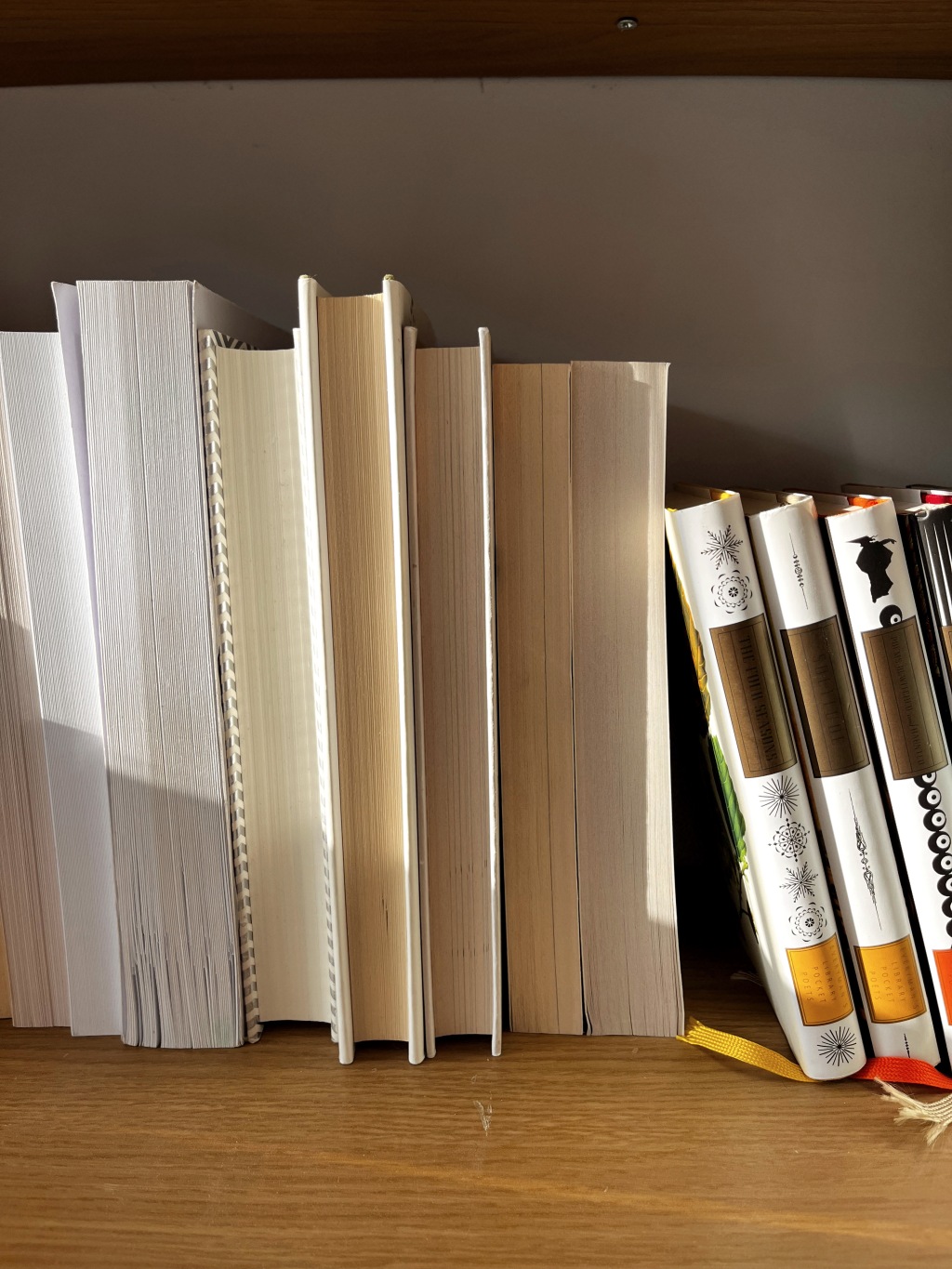
Leave a comment